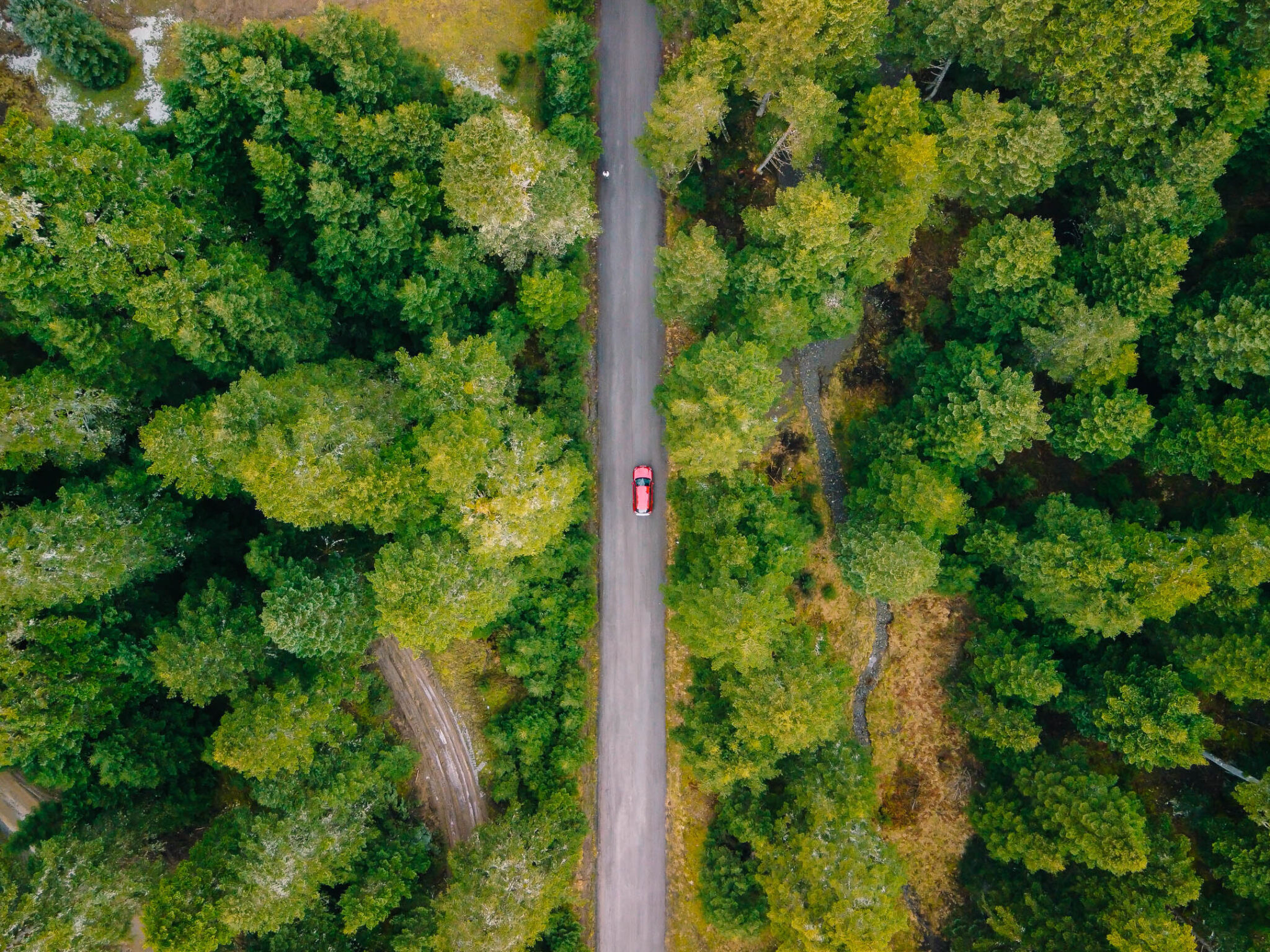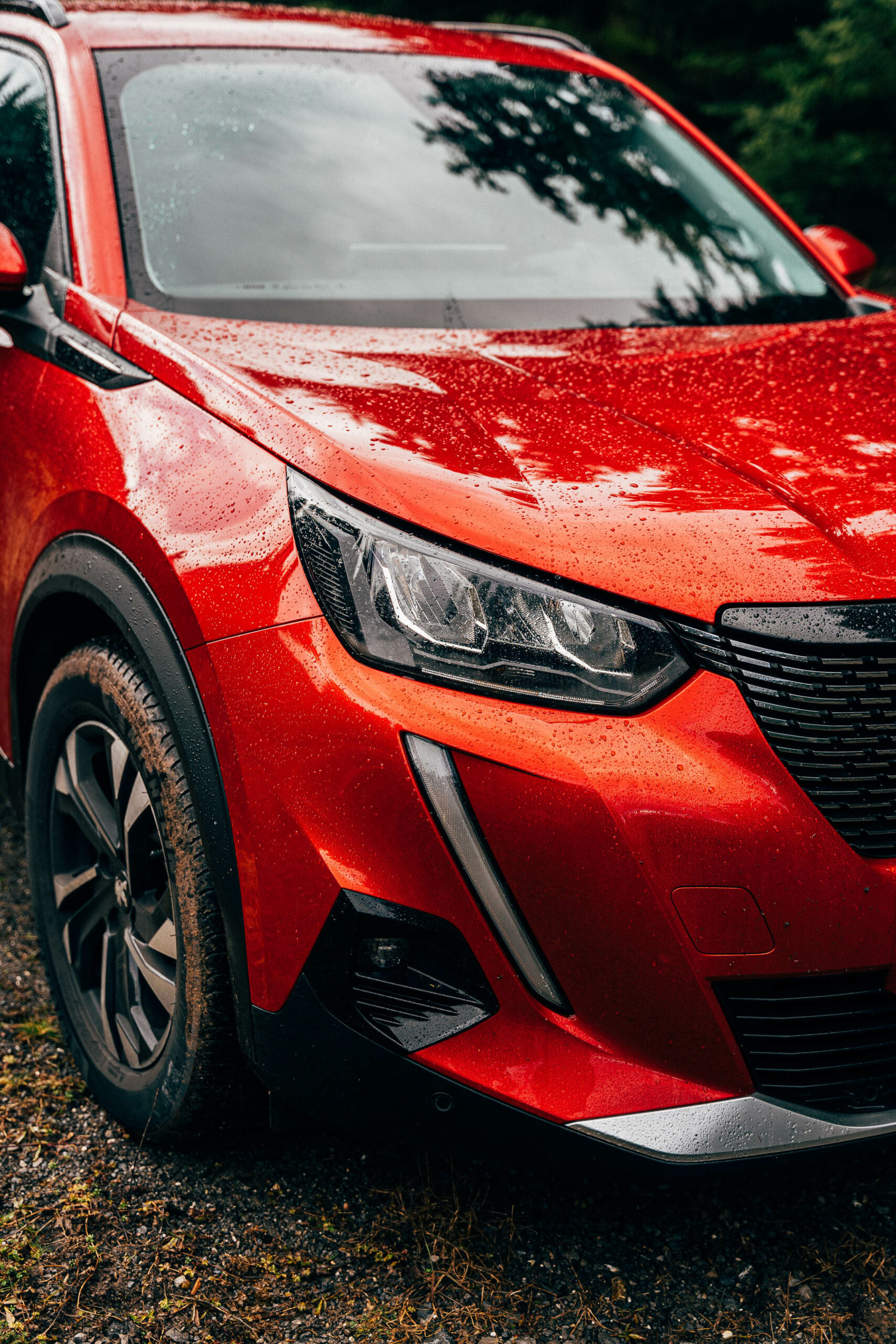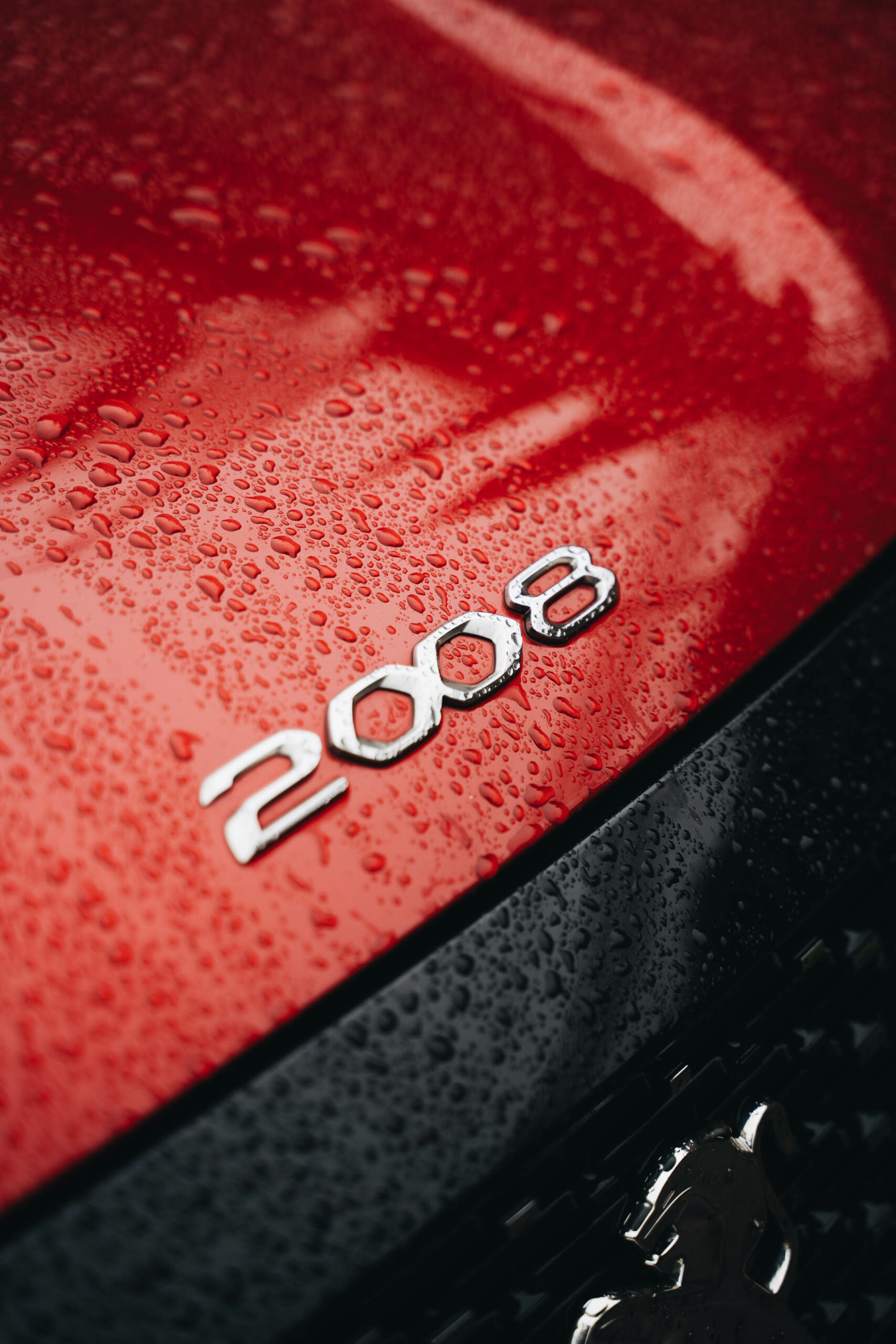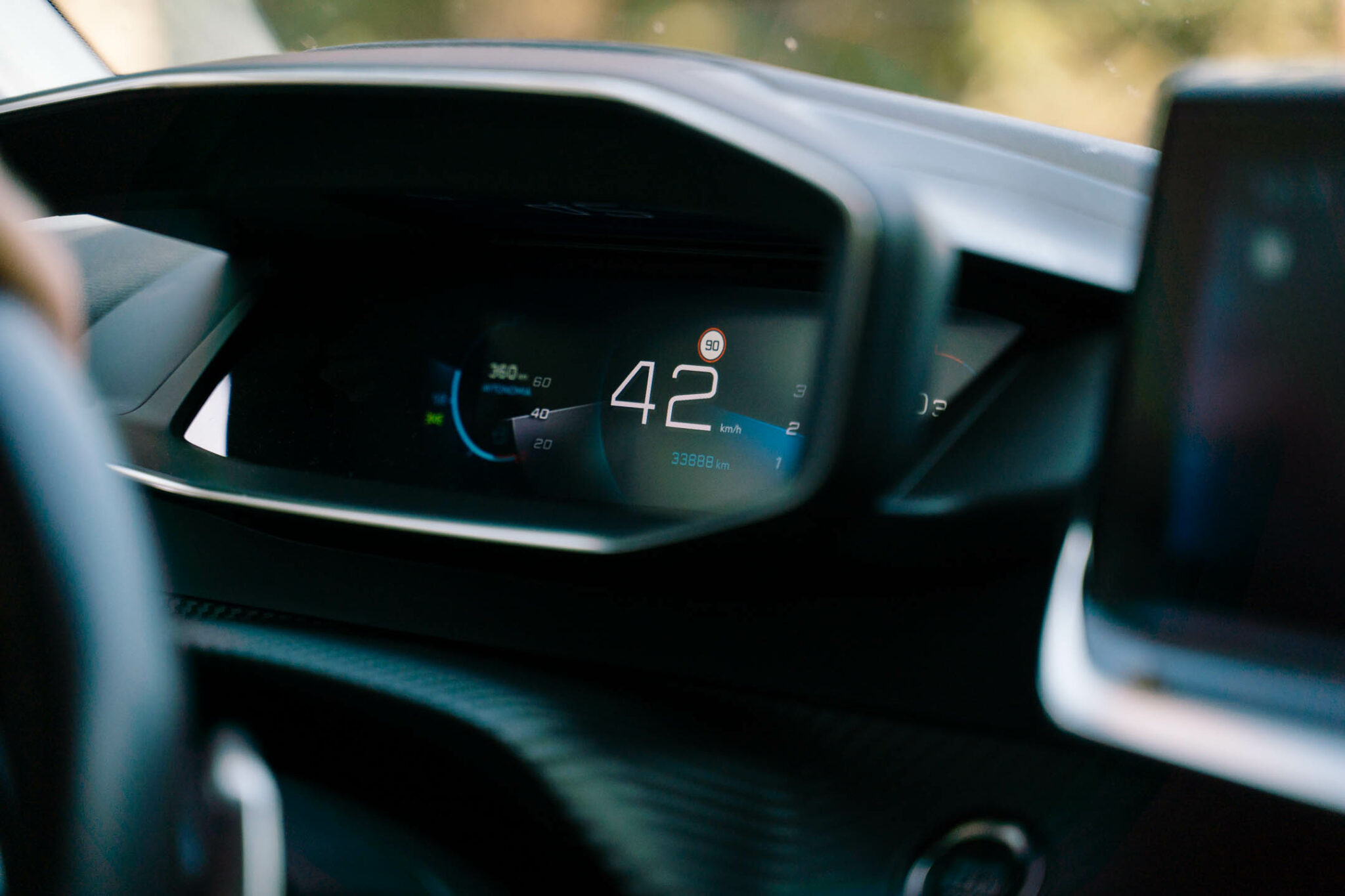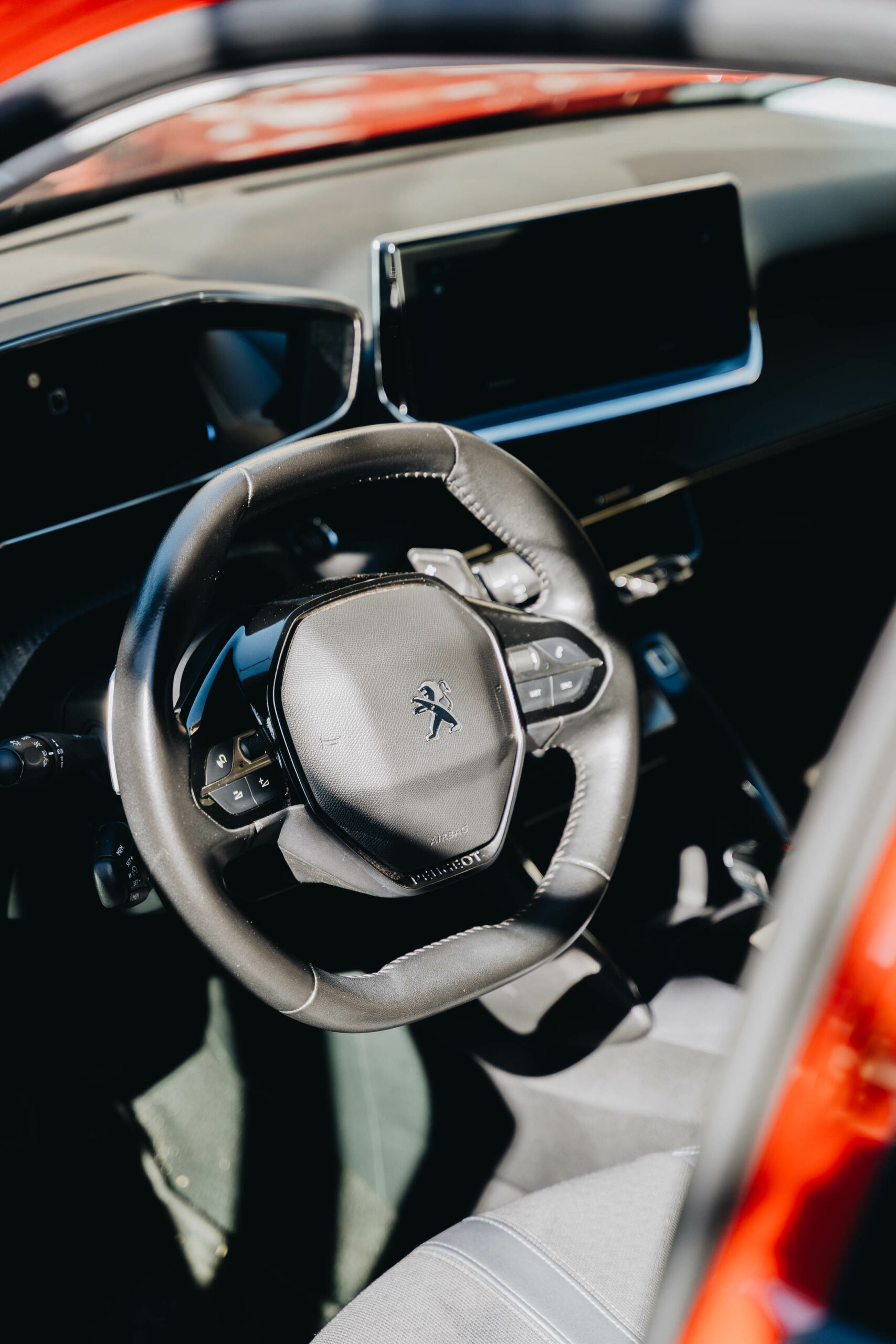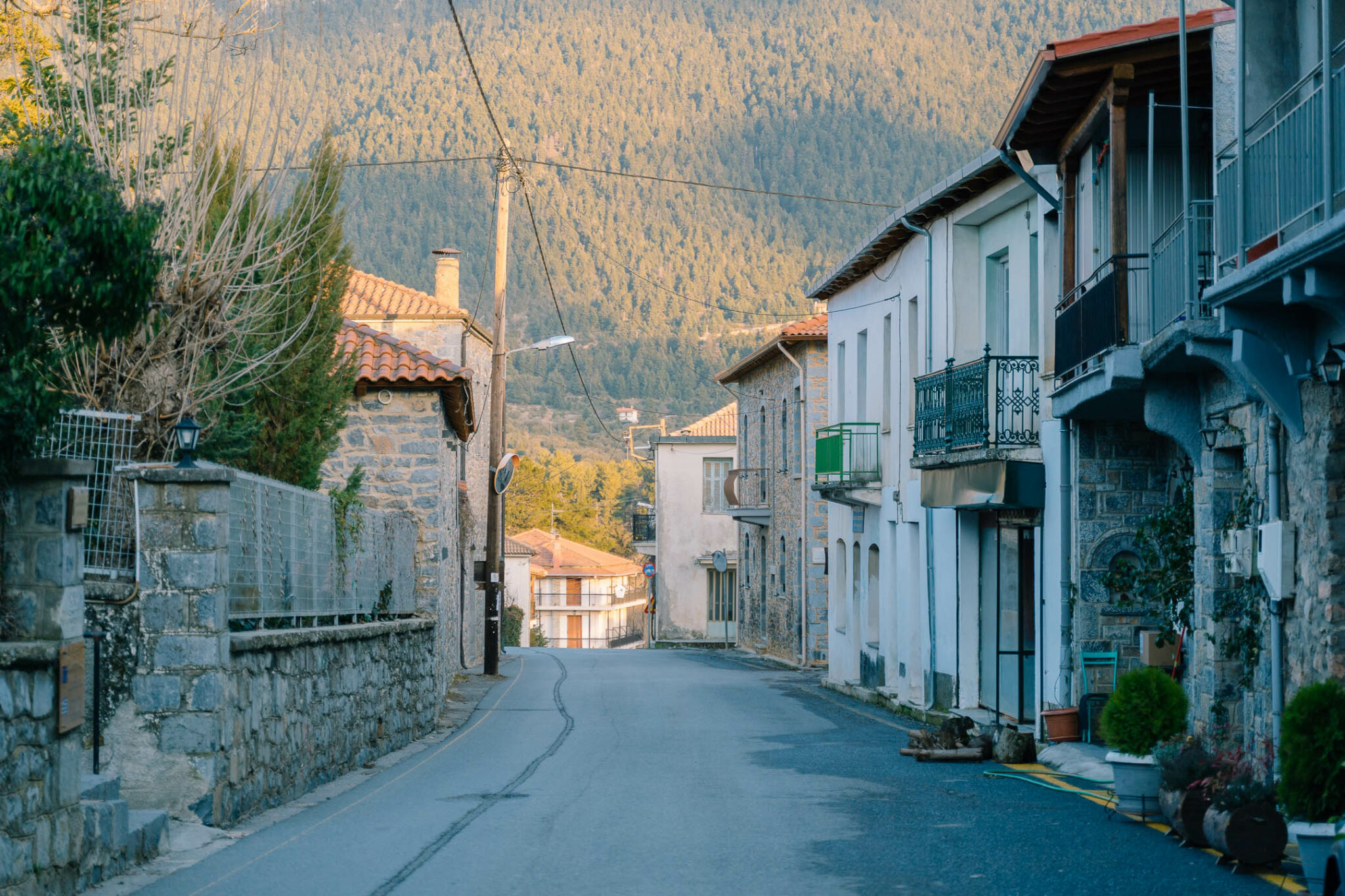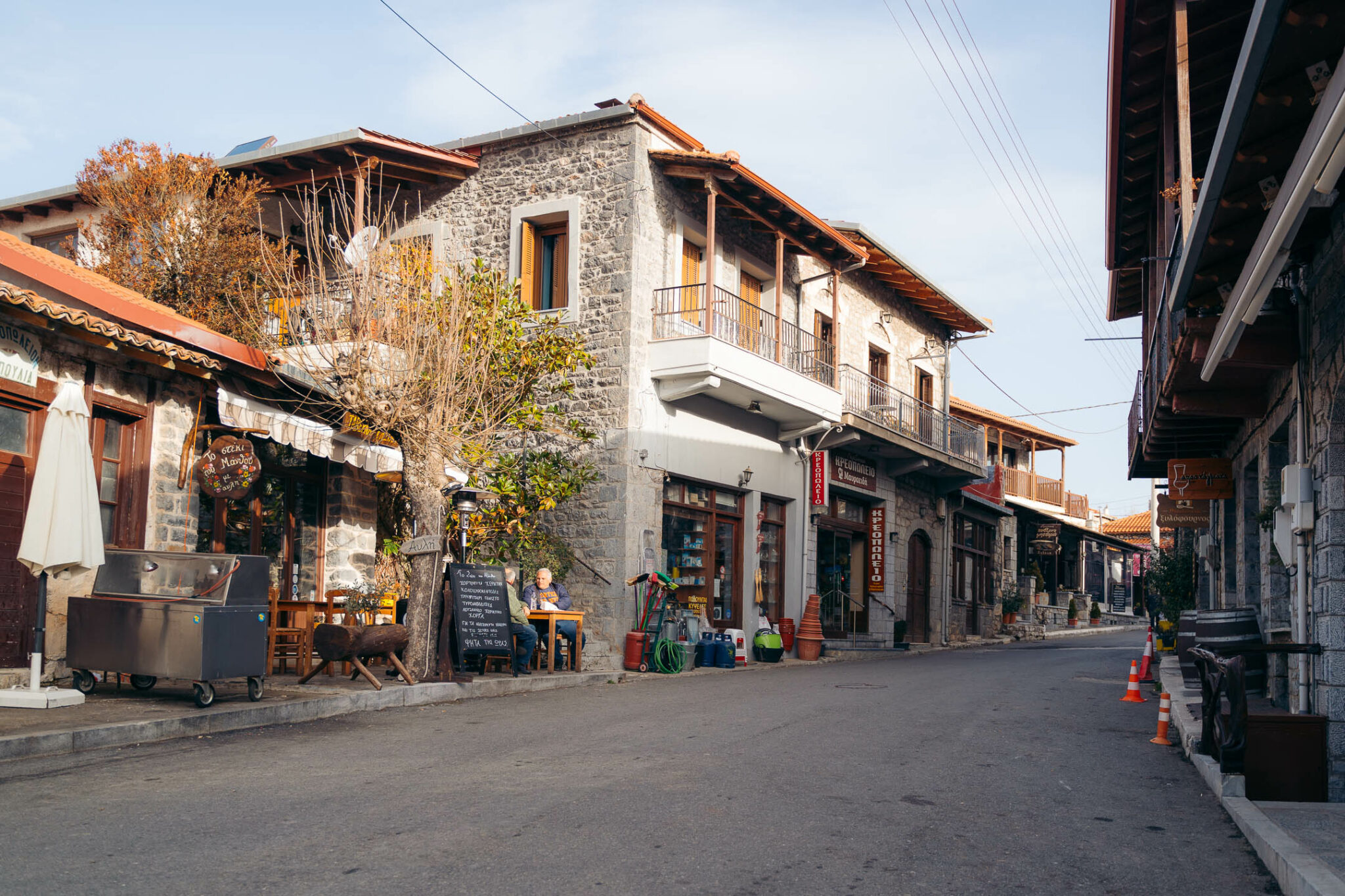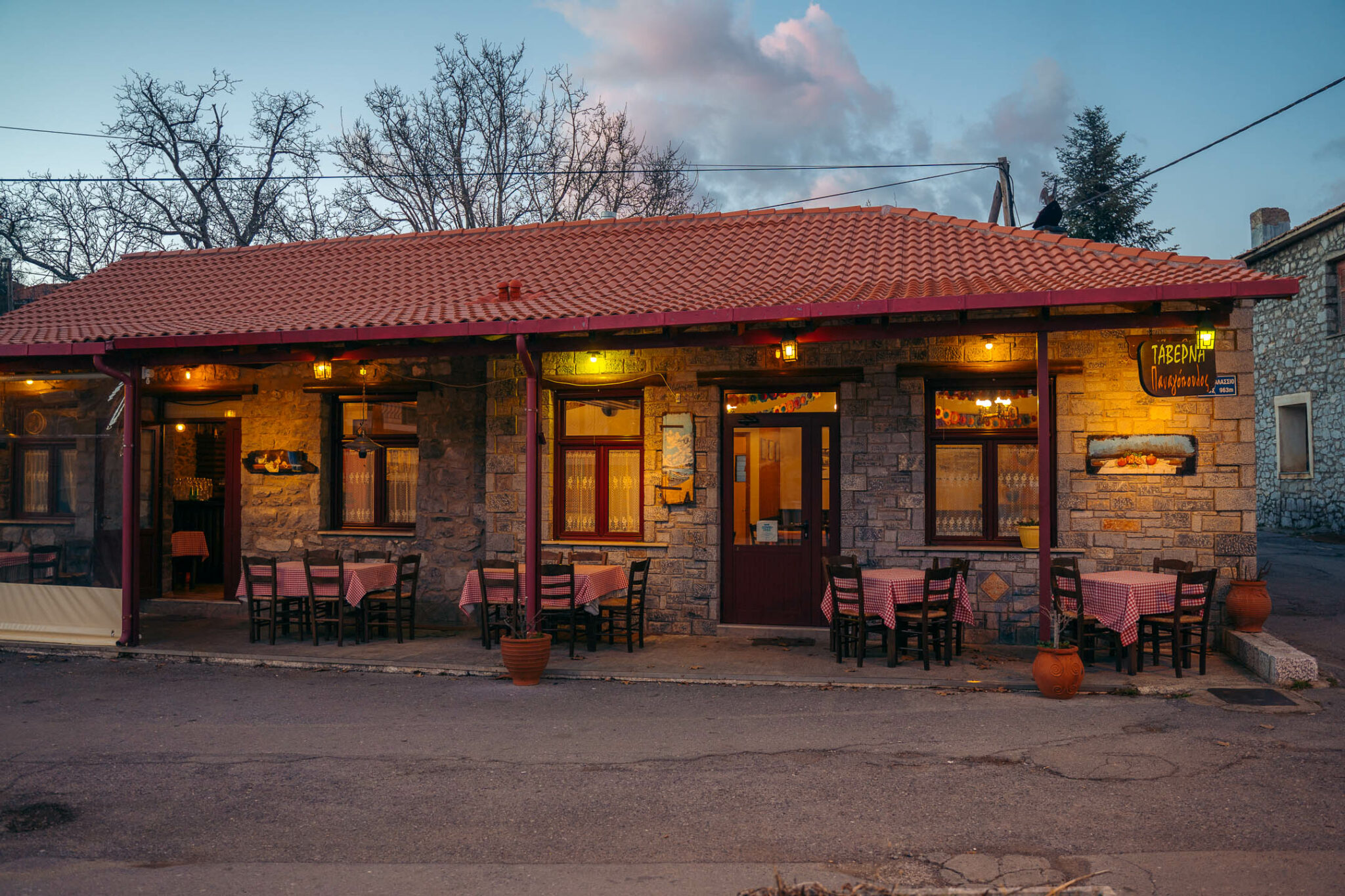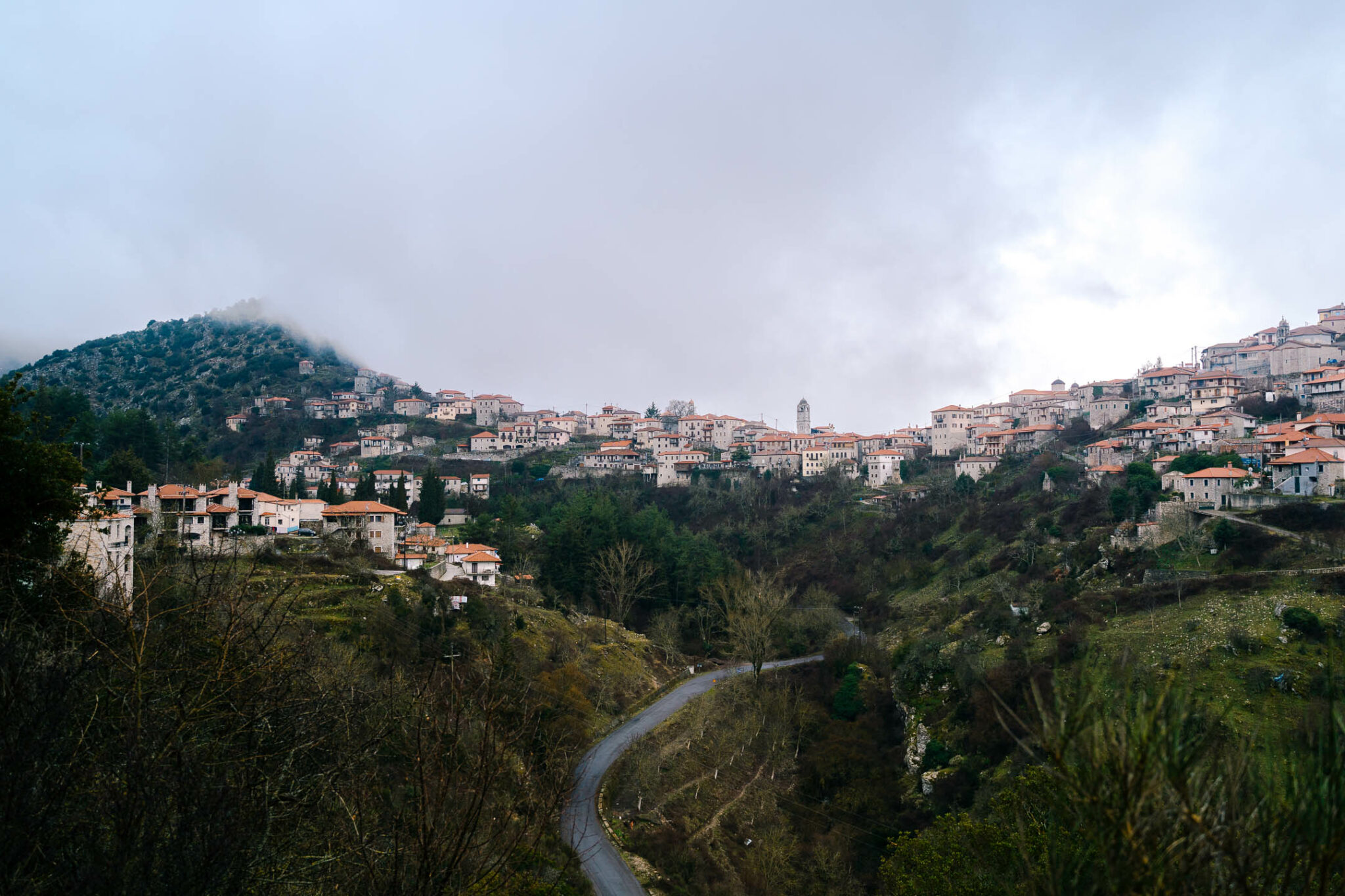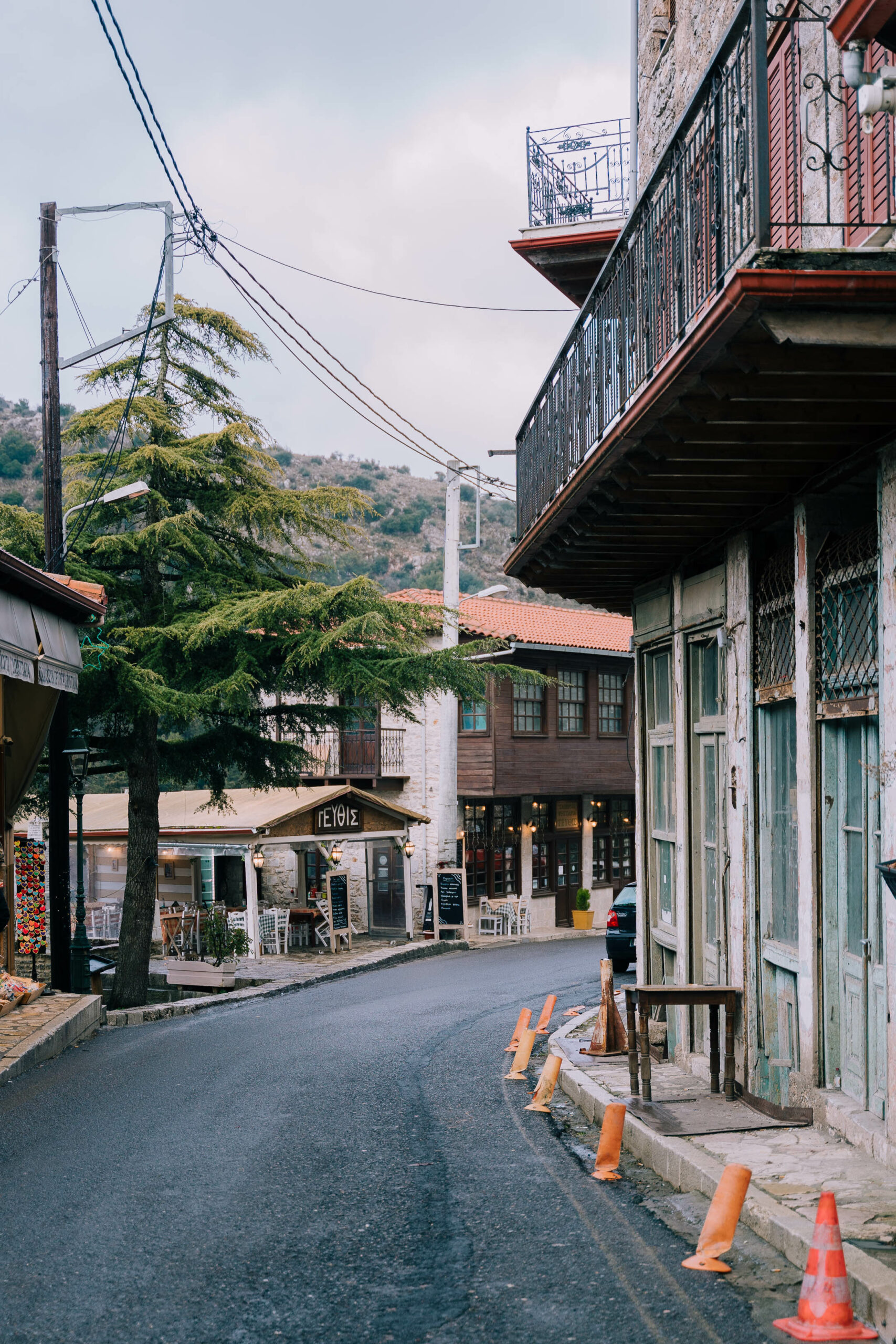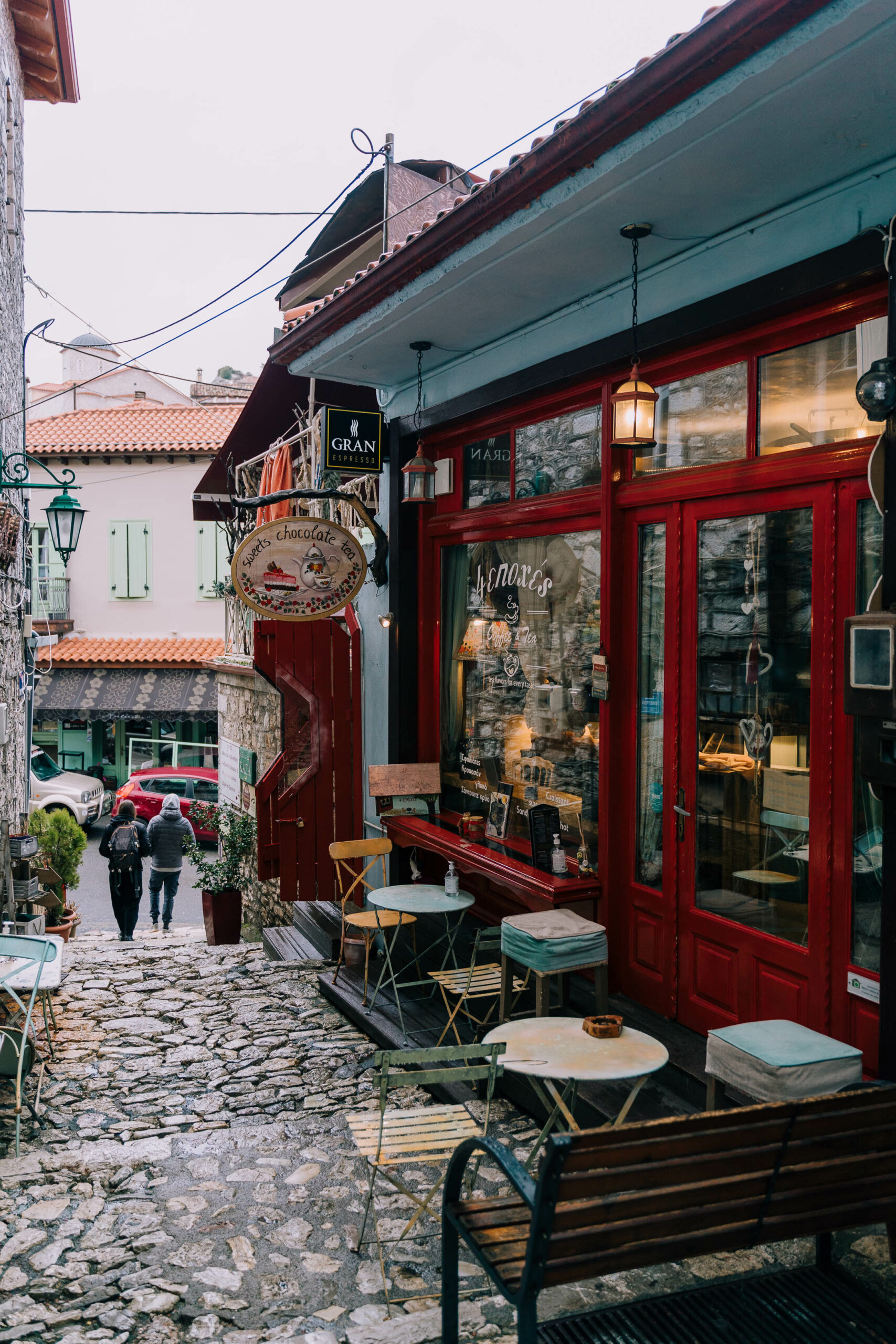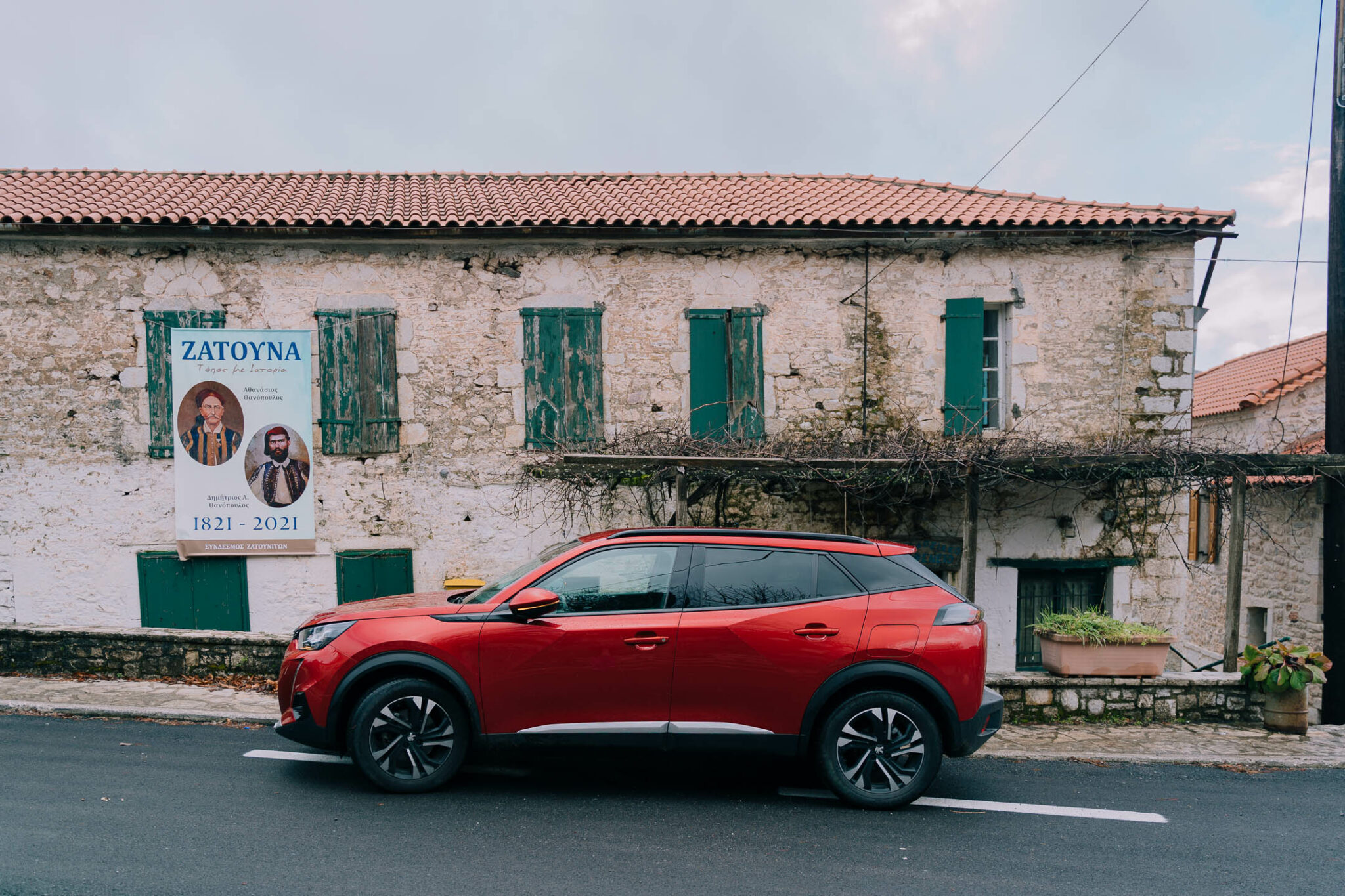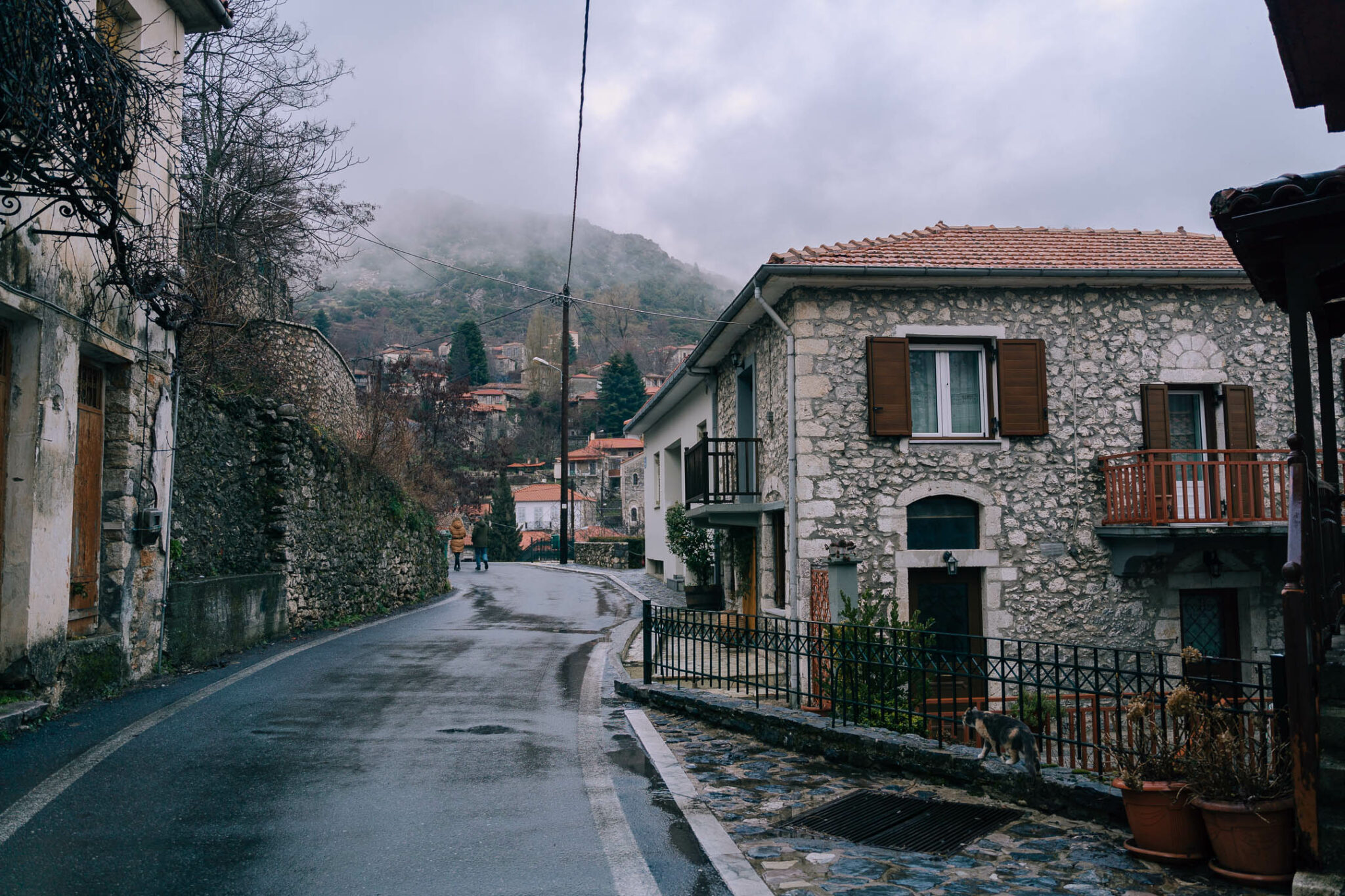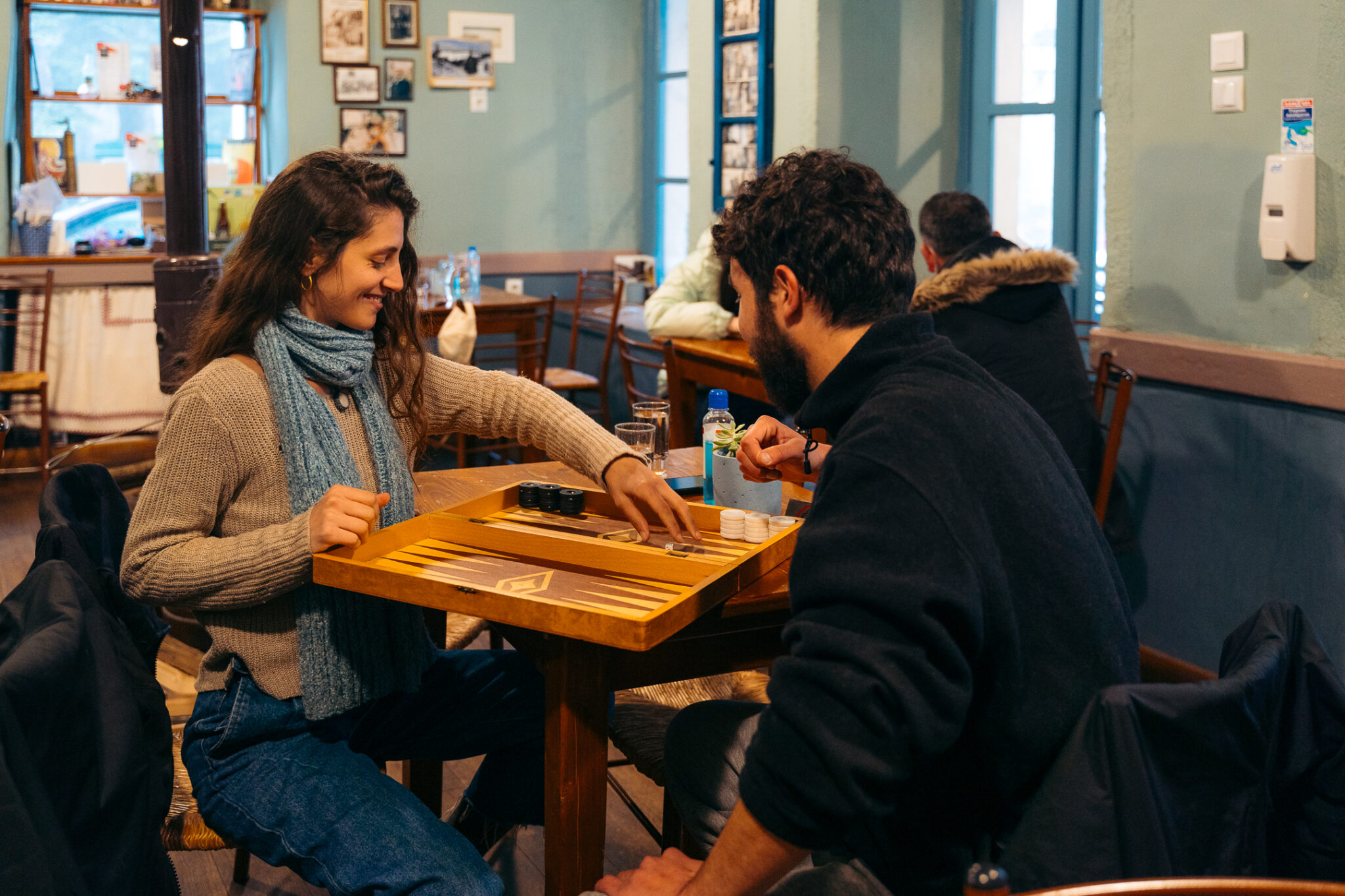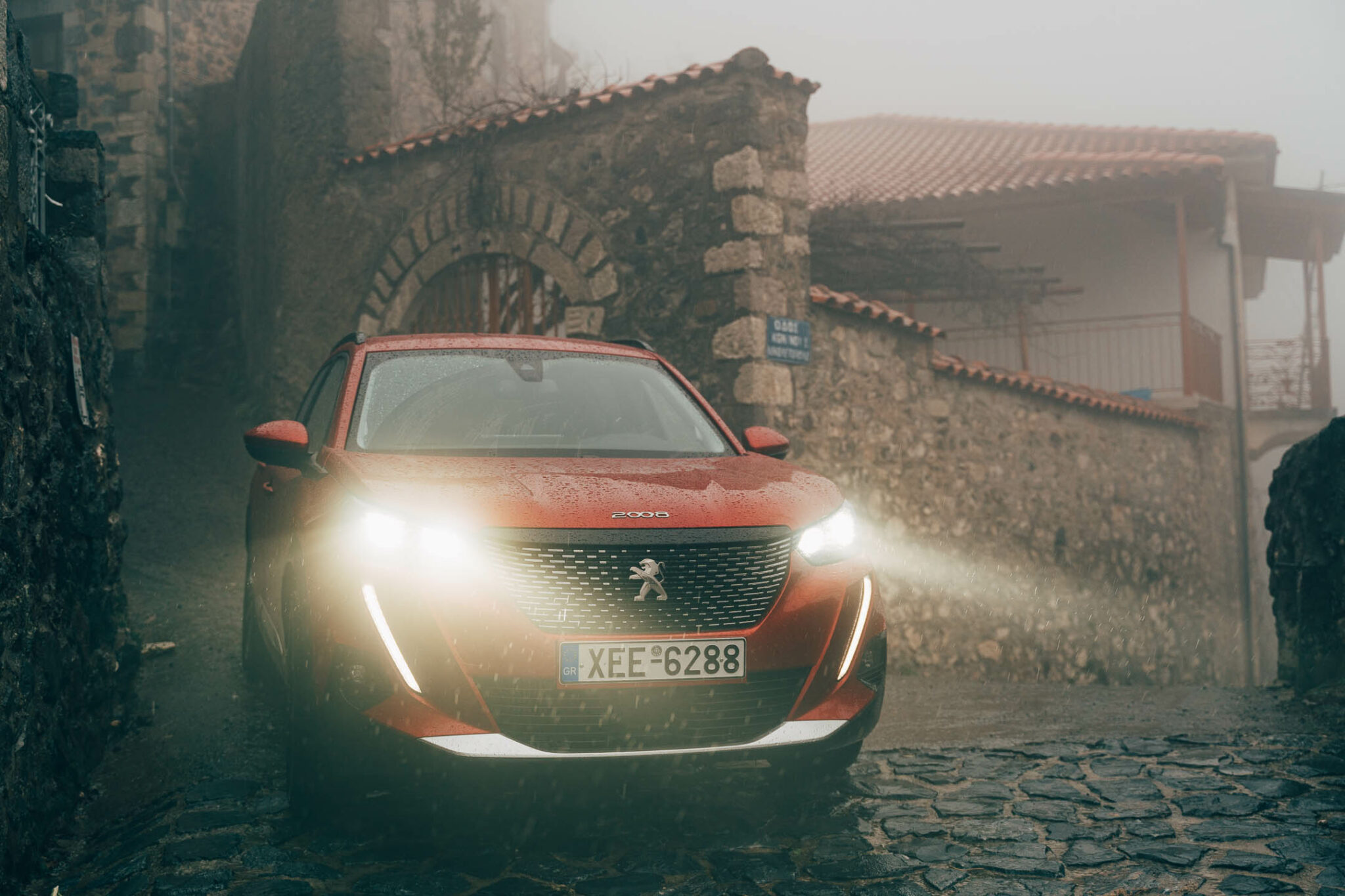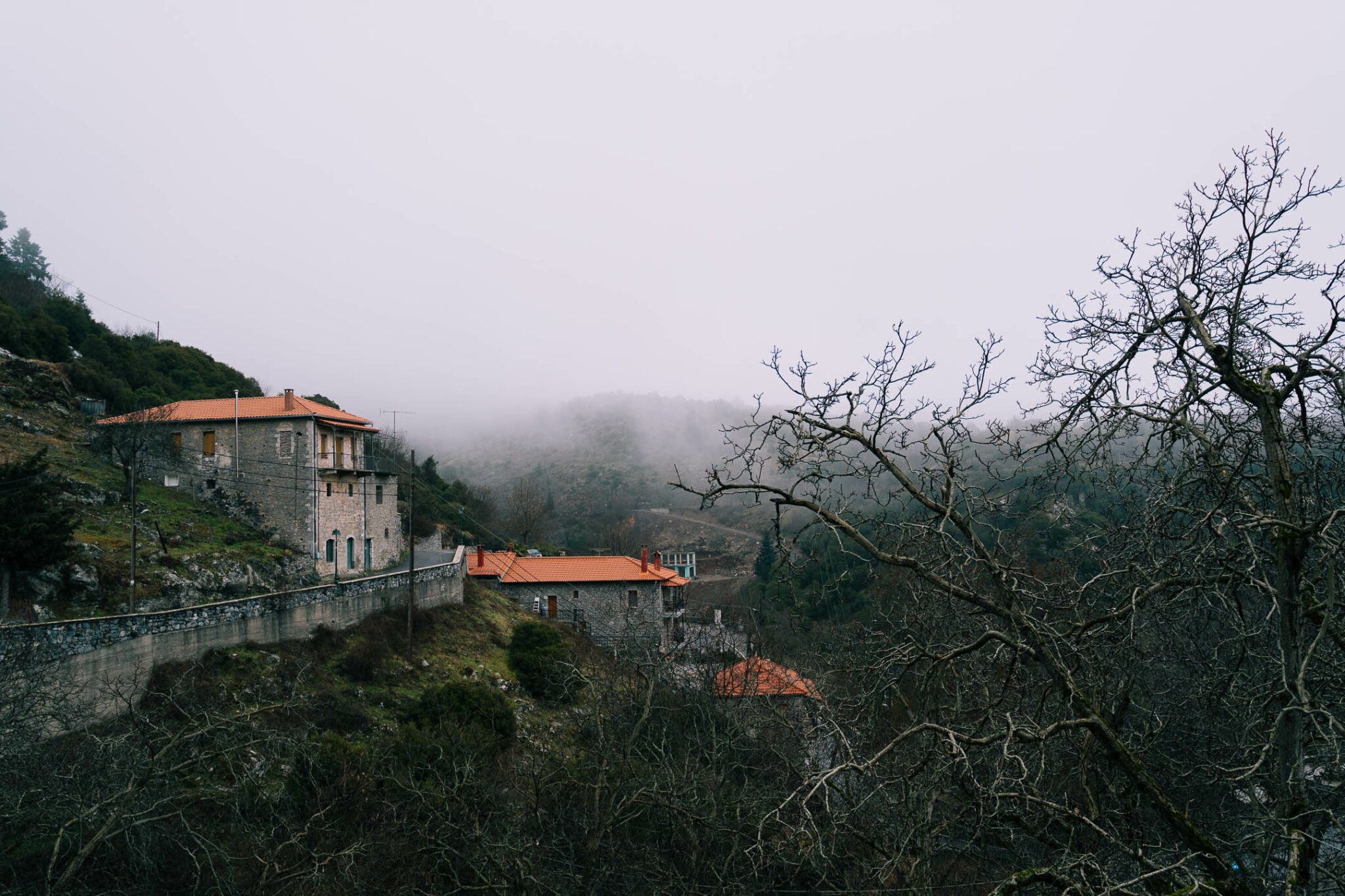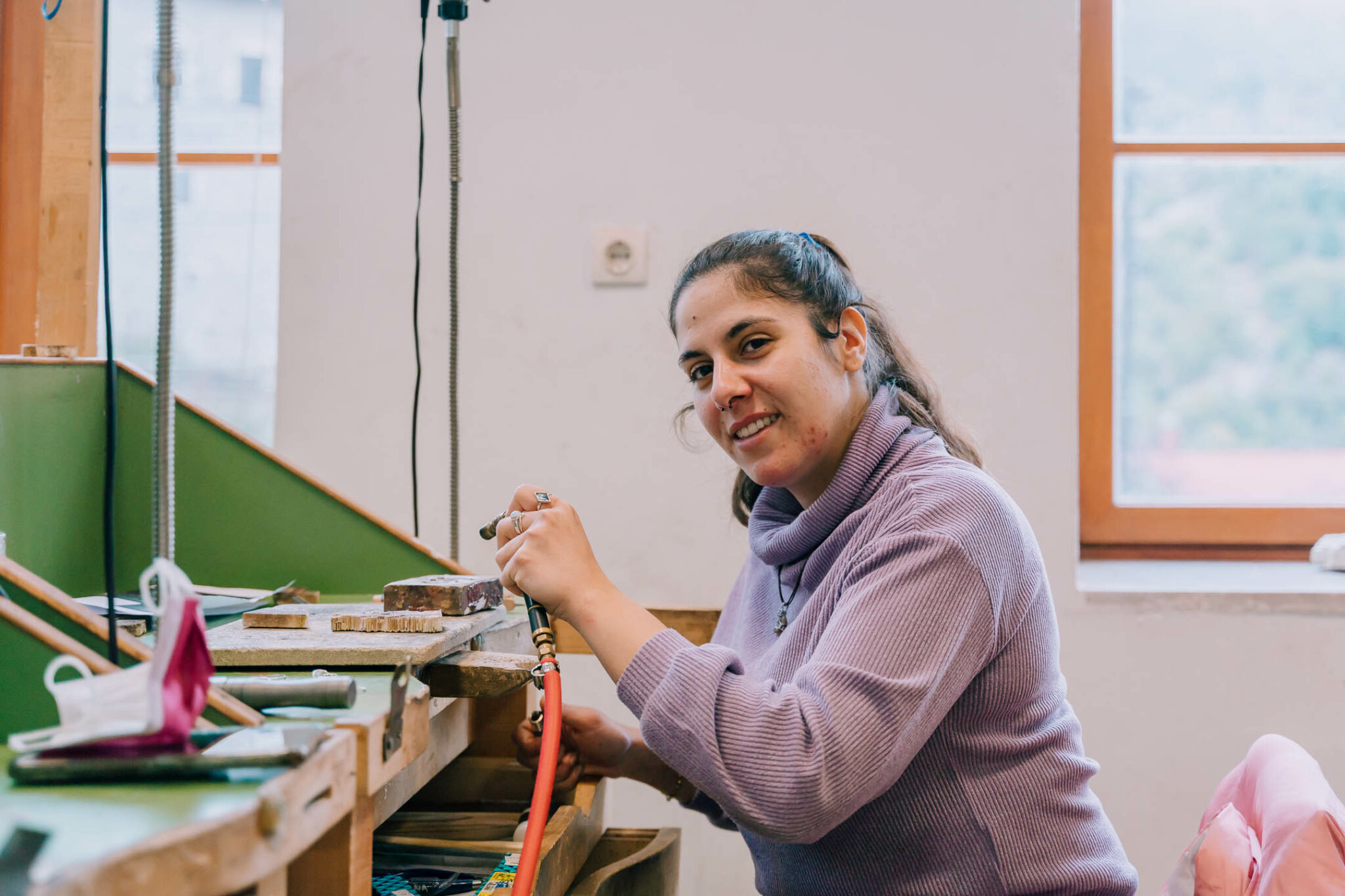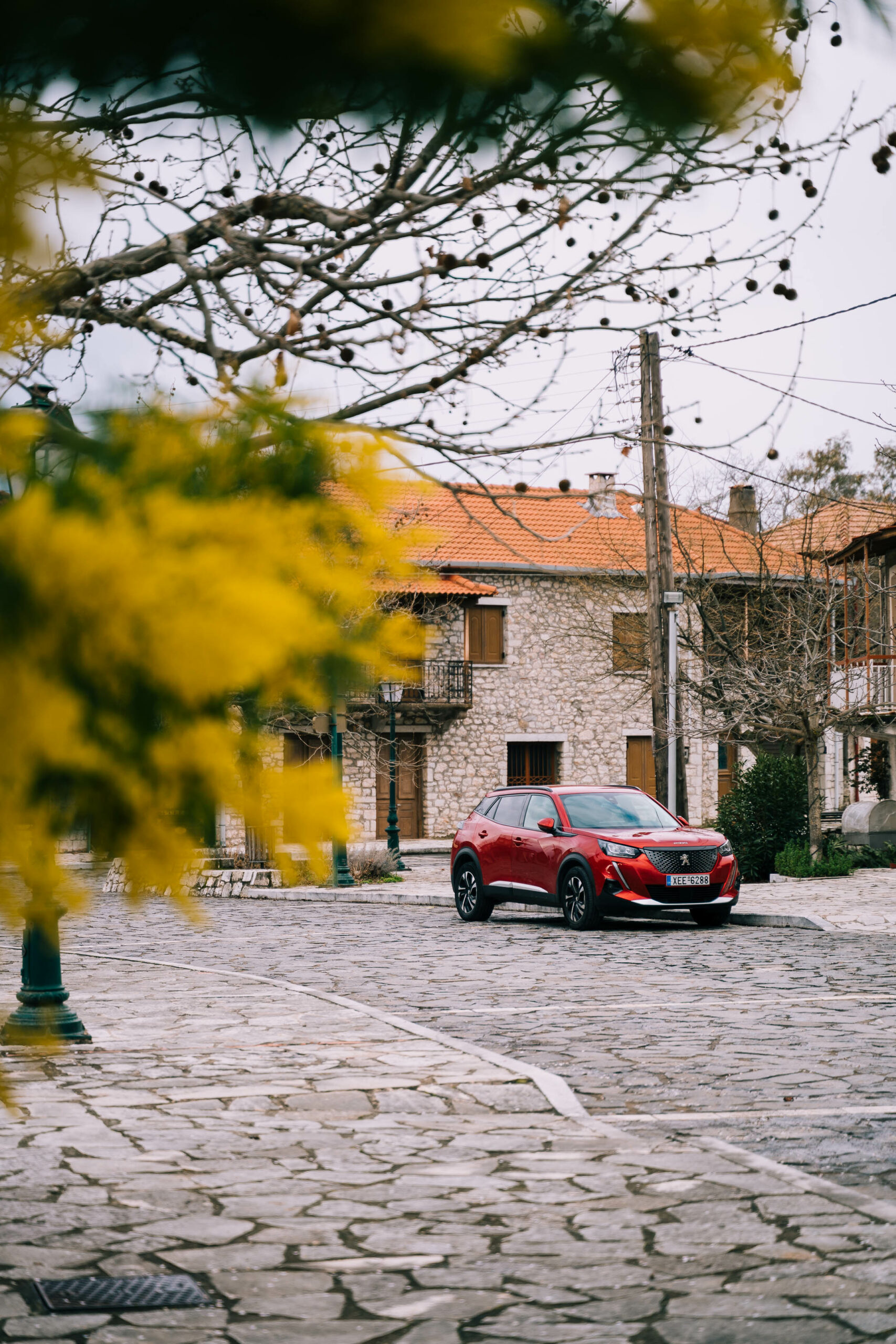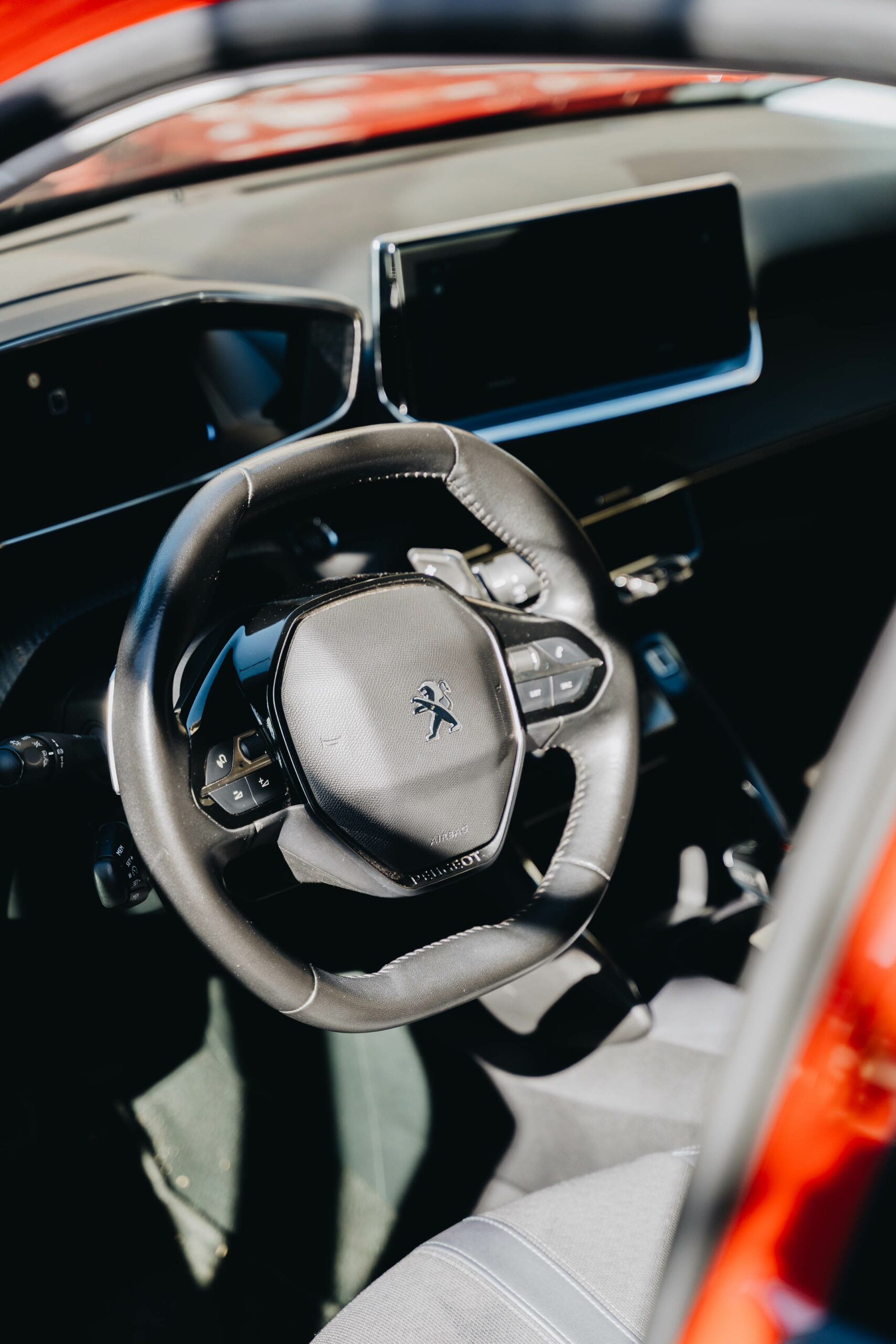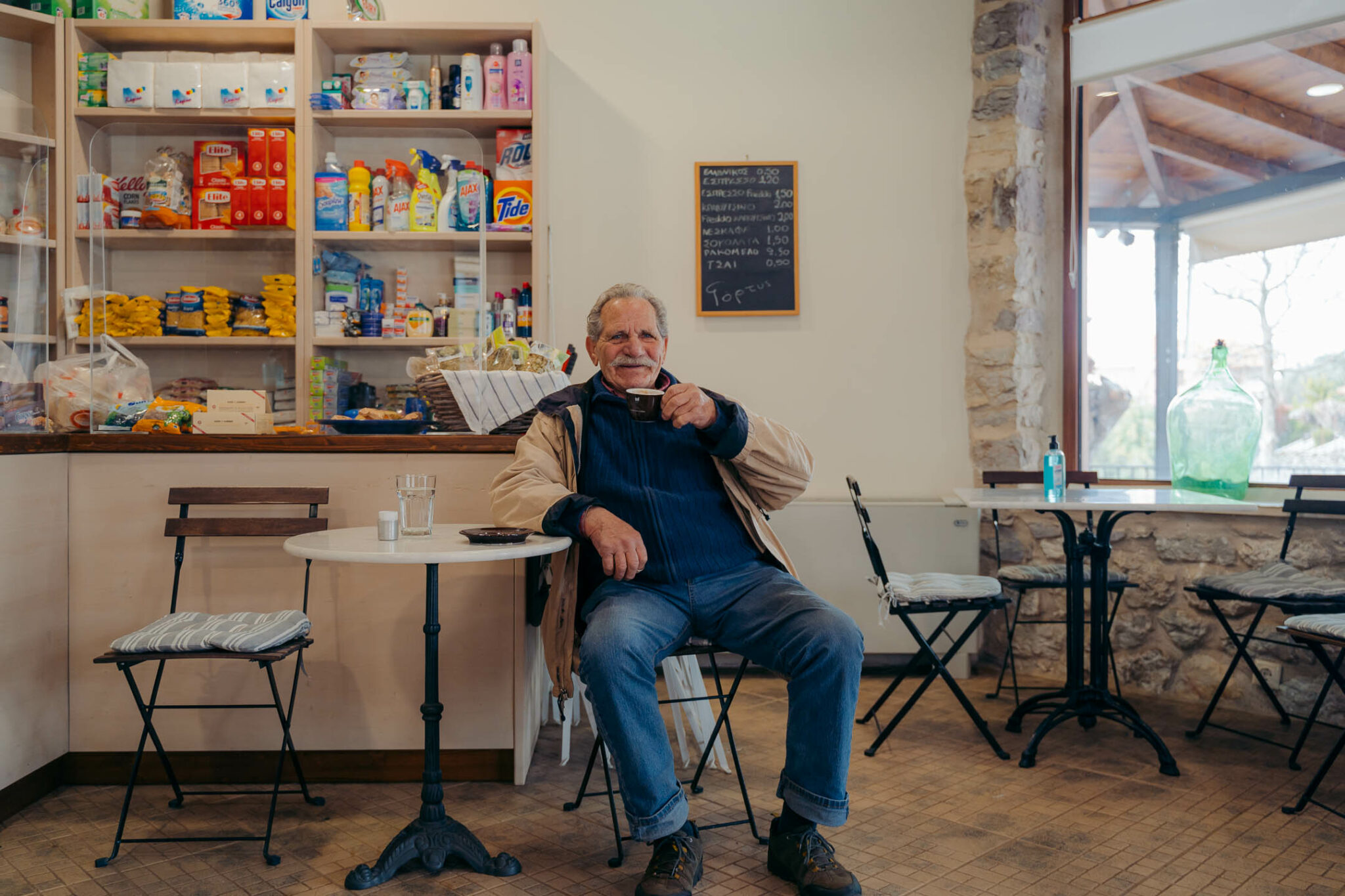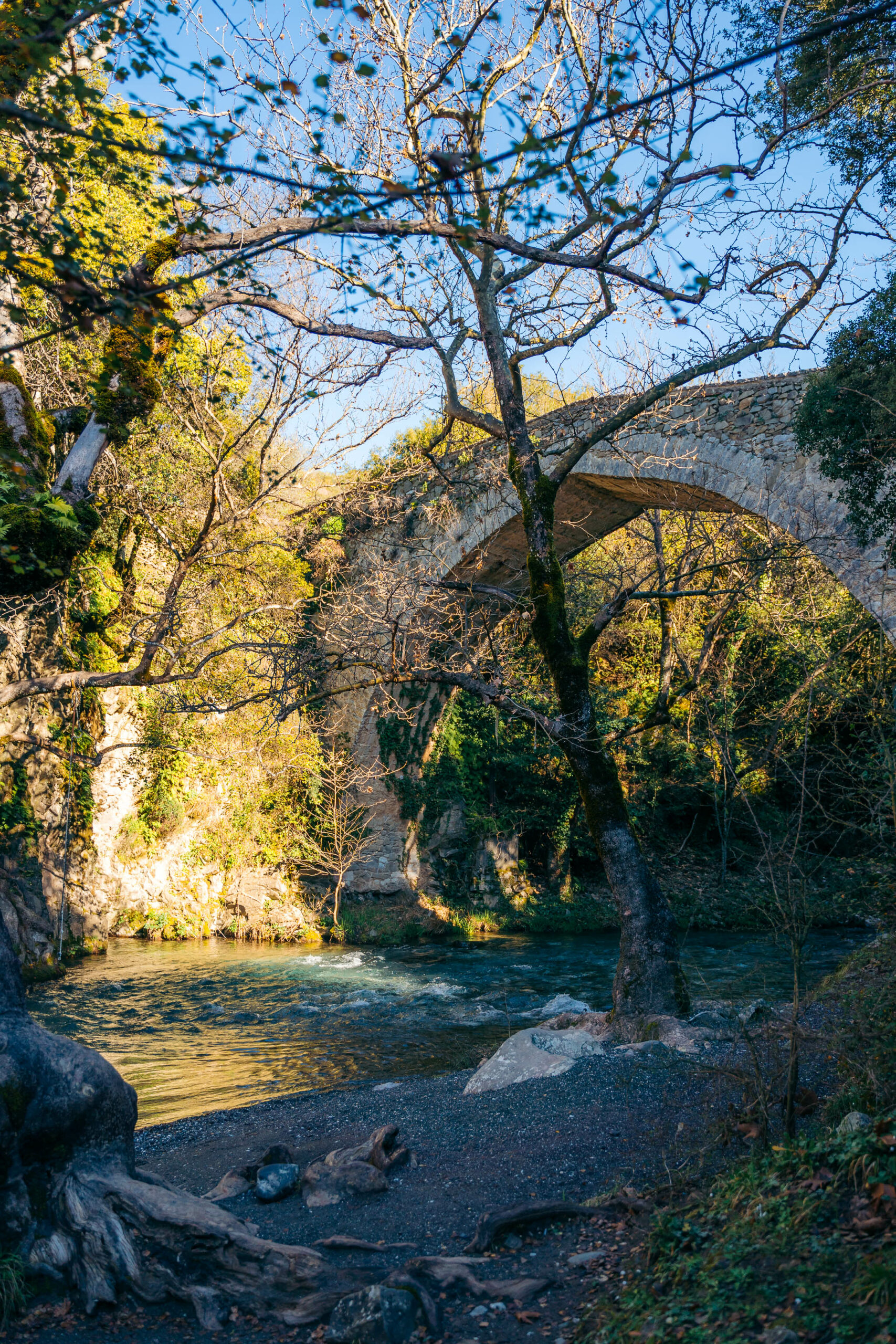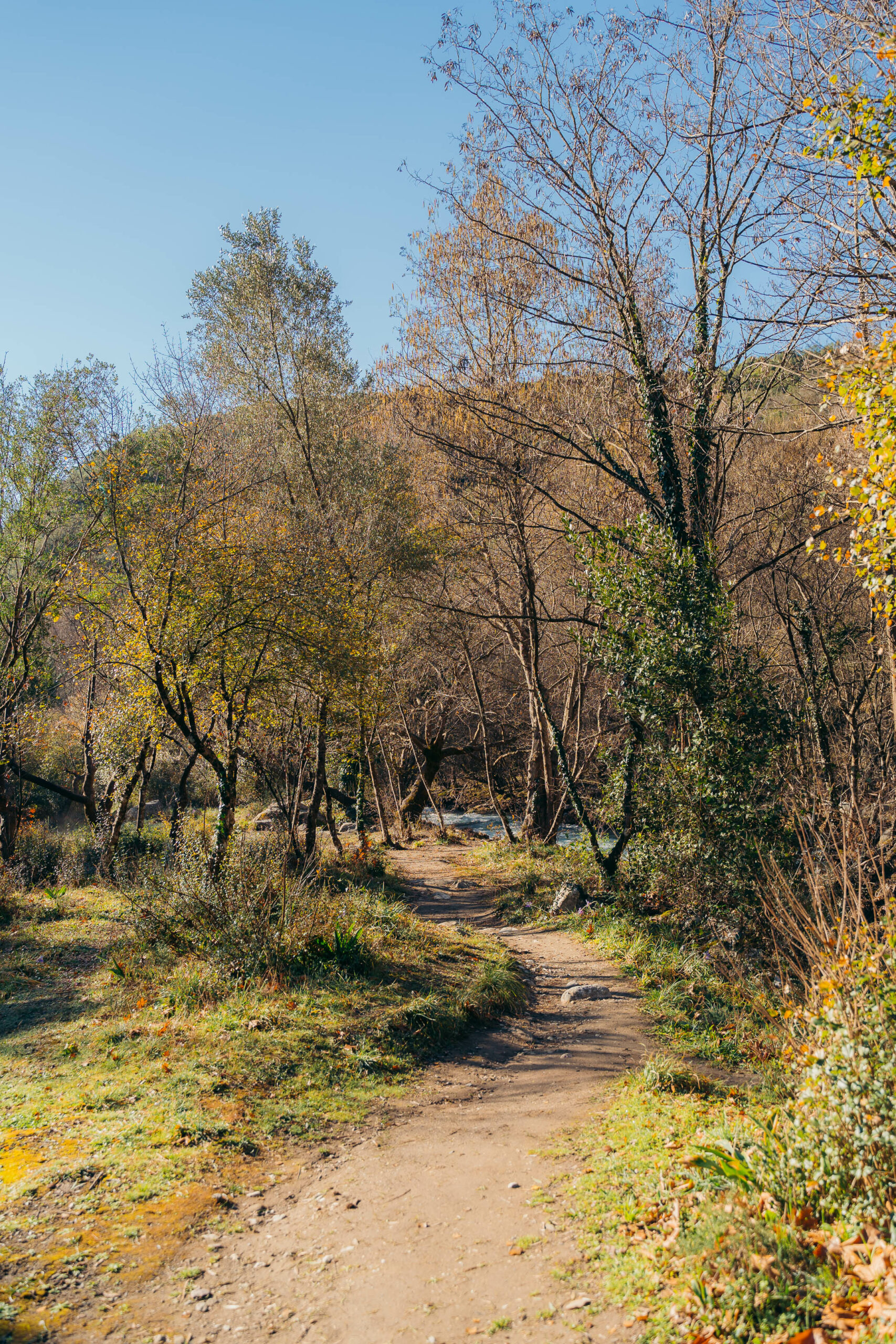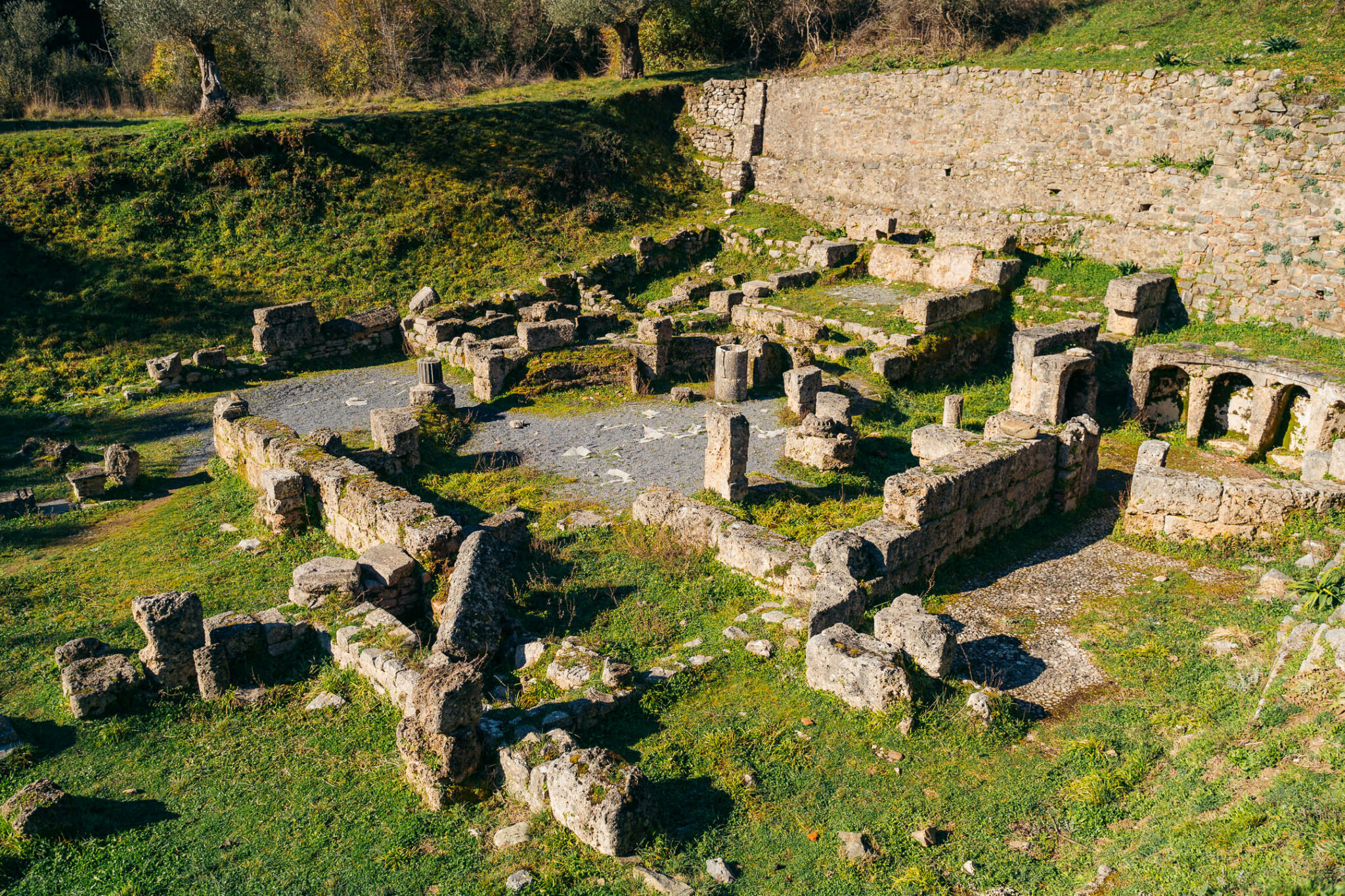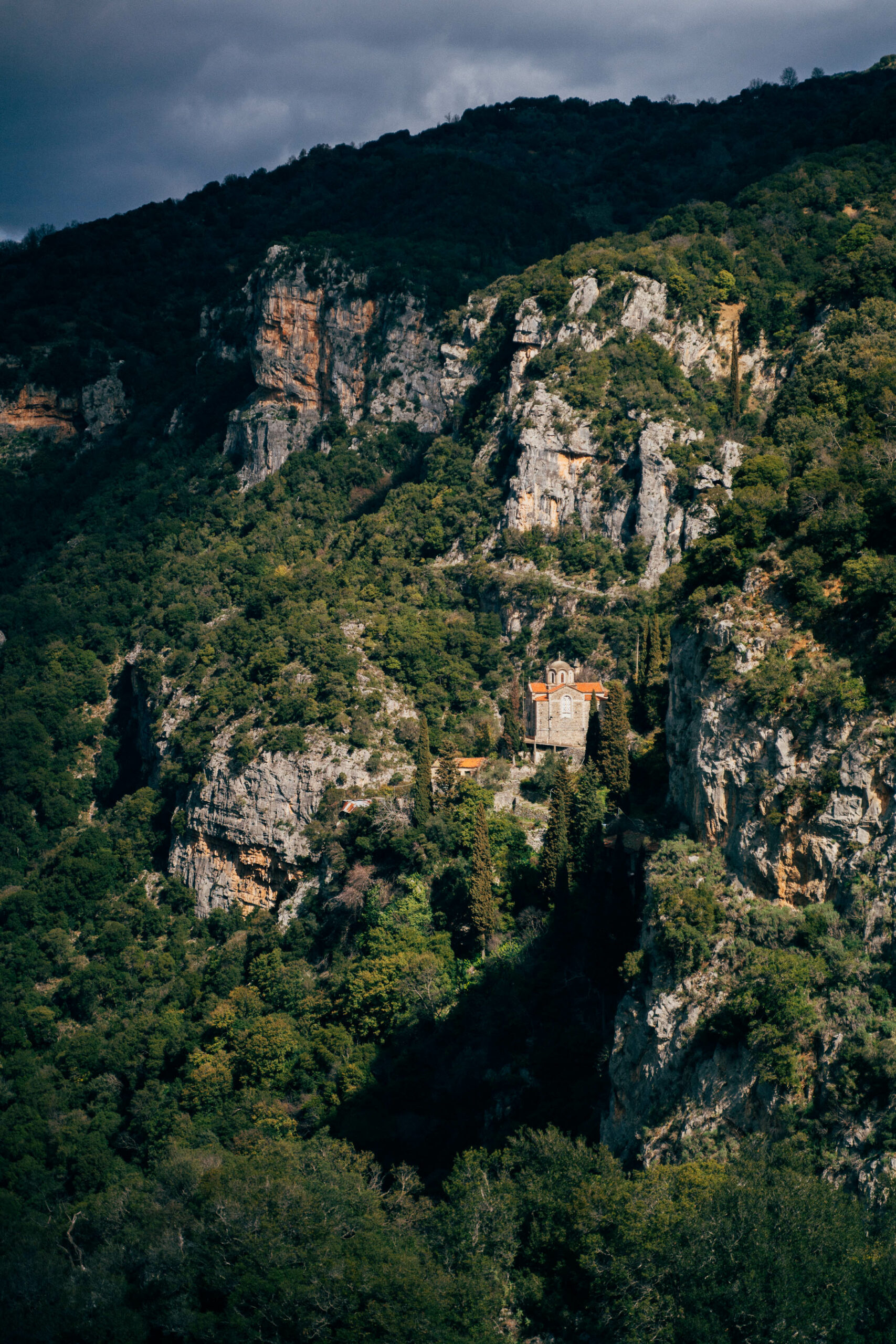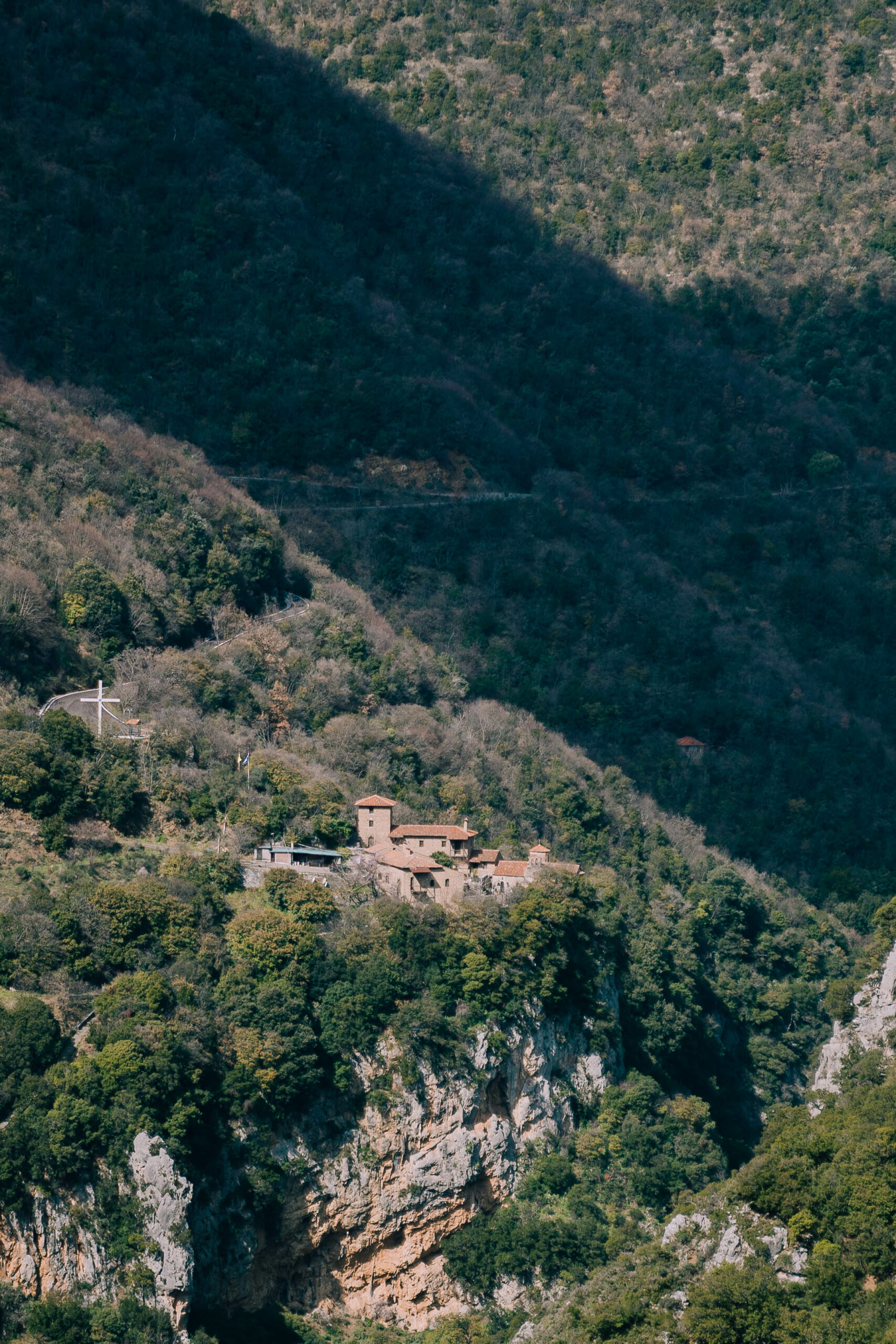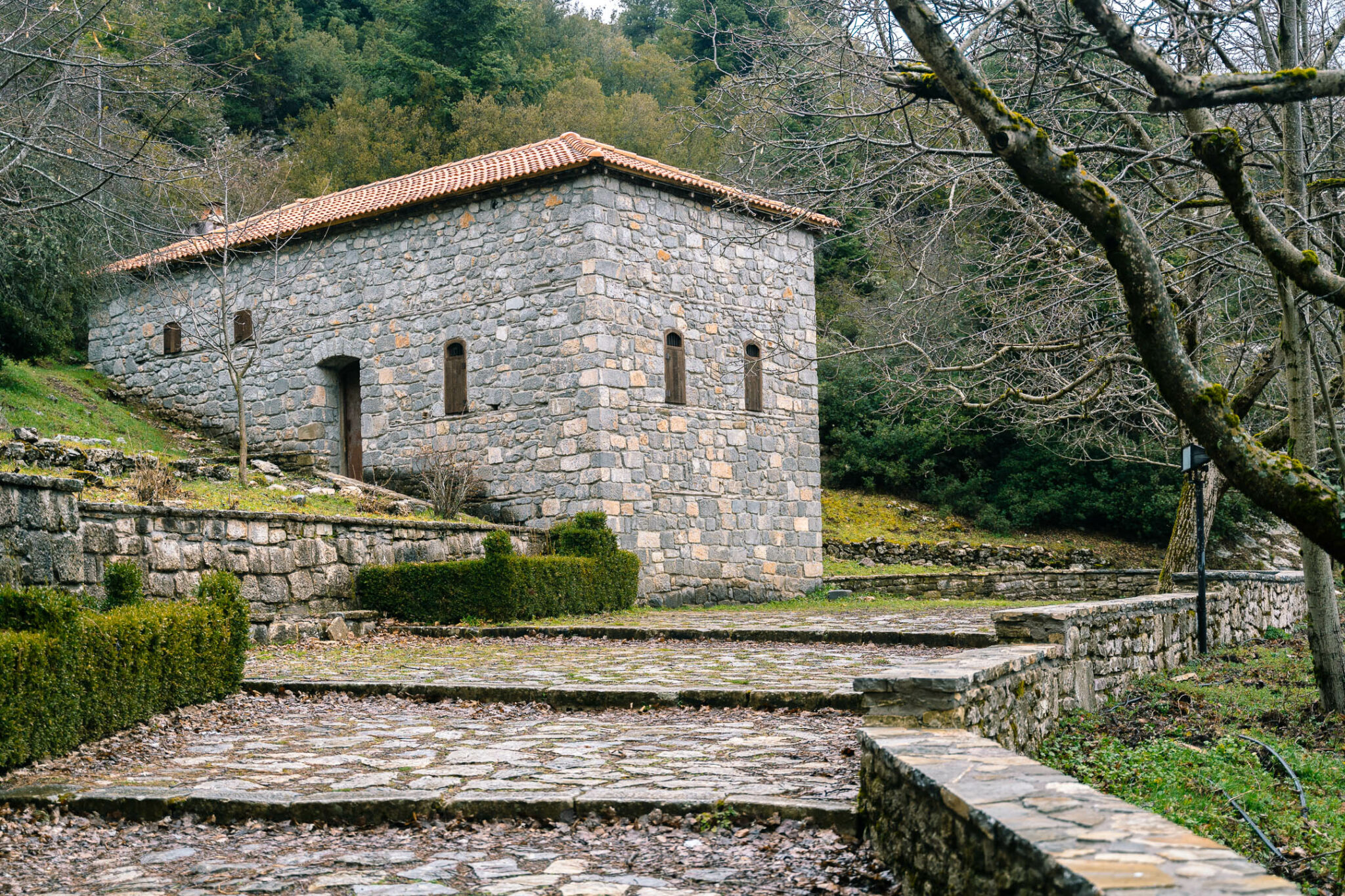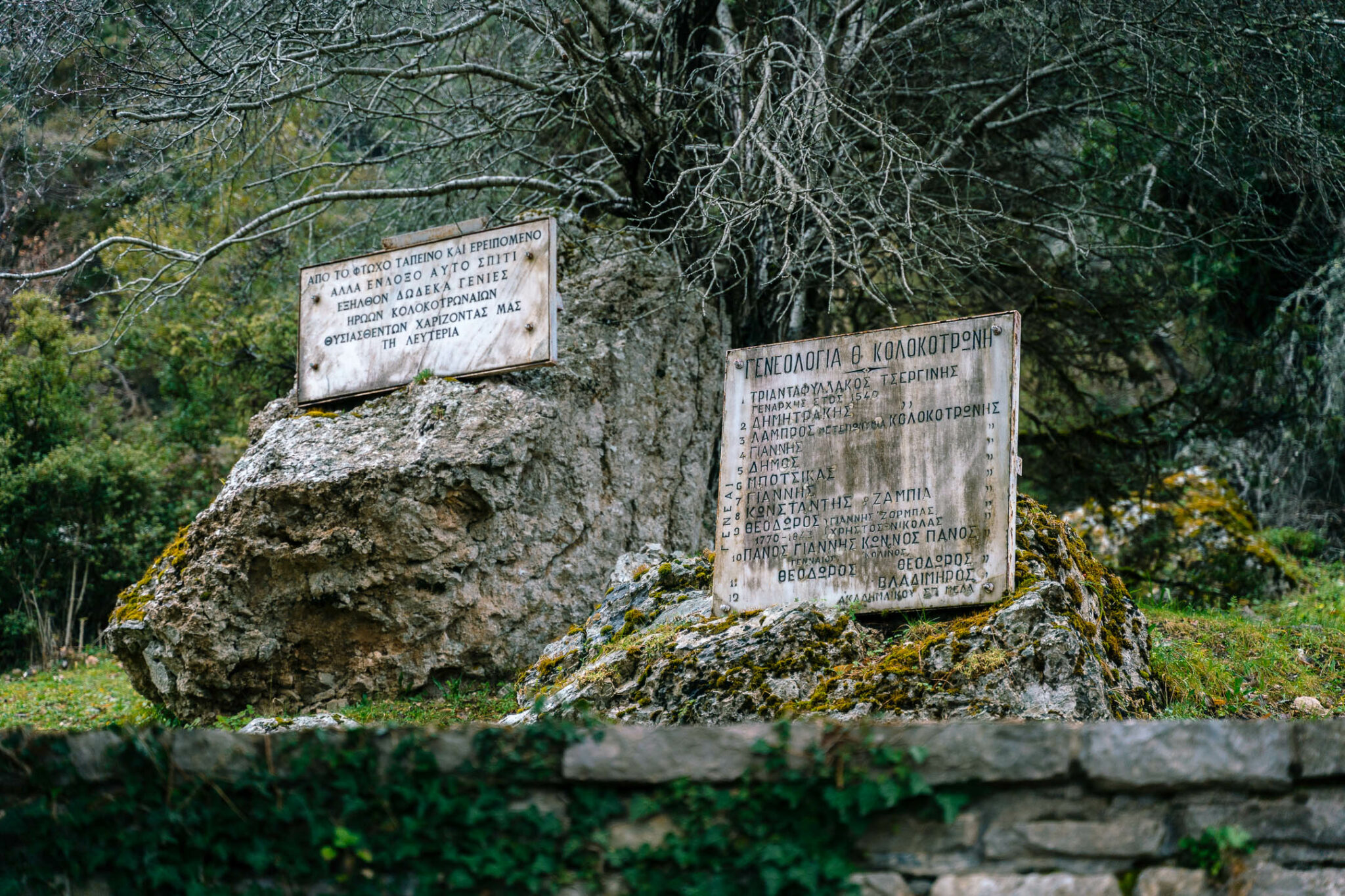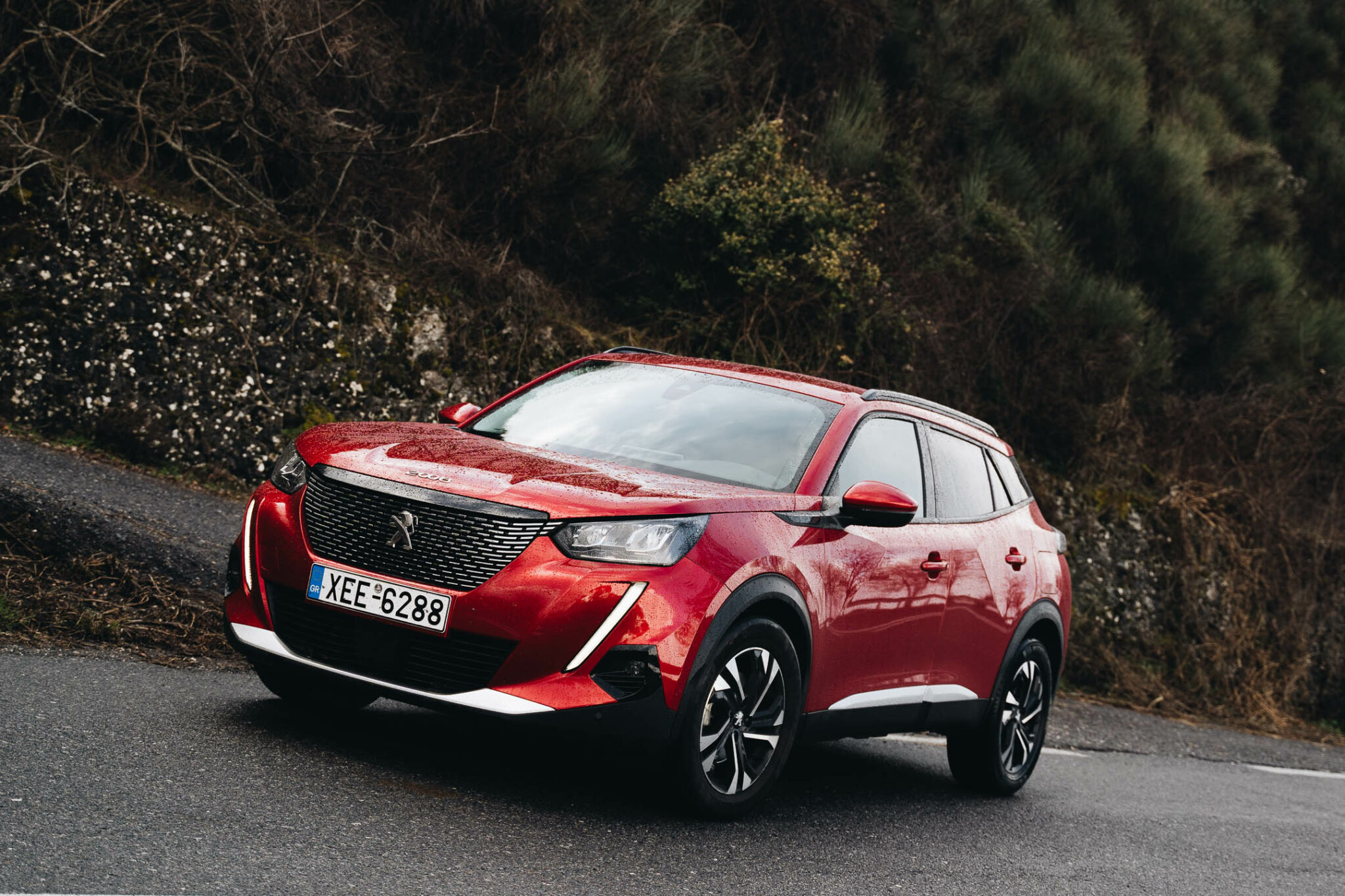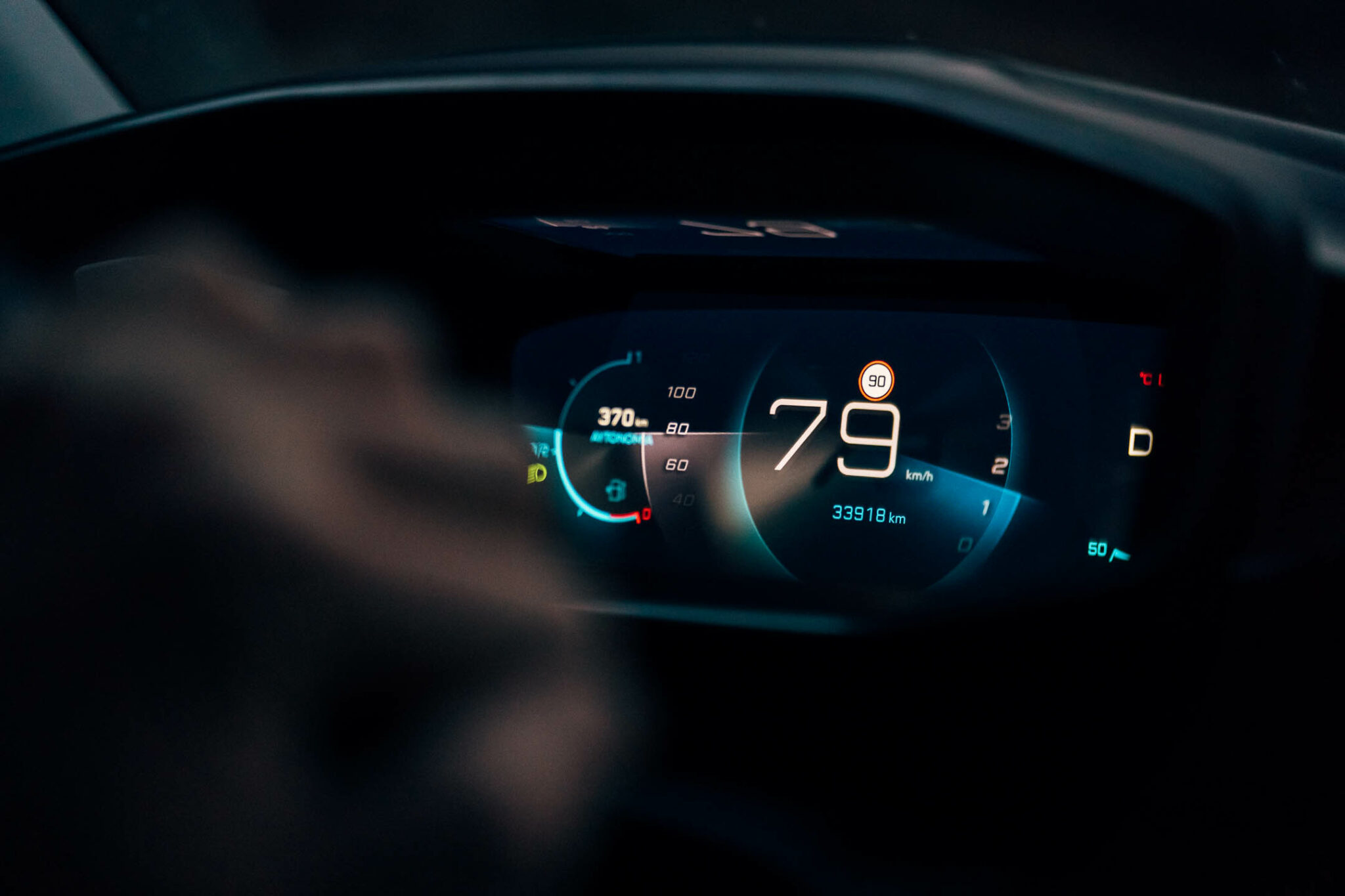We leave early enough to avoid the morning rush. We are heading towards mountainous Arcadia and we have already decided that our first stop will be in Vytina for the first coffee of the day at the Kapnopoleio. That is, a charming new coffee shop that seeks to reinvent the concept of the traditional square café by offering quality coffee, delicious baguettes and as the day progresses imaginative cocktails and drinks.
We travel in the stylish Peugeot 2008, an SUV that knows how to grab the attention while offering comfort and safety on the road. The EAT8 automatic transmission that offers a comfortable journey, combining high performance with low fuel consumption, especially when paired with Peugeot’s top-of-the-line and environmentally friendly BlueHDi diesel engine.
It is almost 9 in the morning and we are already approaching Vytina. We stop at the roadside and enjoy the unique view of the settlement of Kamenitsa, as it emerges from a cloud of fog. We take some photos and return to the Peugeot 2008.
Our fully integrated navigation system provides the necessary real-time information and safety-related warnings by the TomTom company. In addition, the dynamic screens in the i-cockpit, which is placed at eye level, significantly improve the driving experience and at the same time give us a sense of security. In addition, the touchscreen makes it particularly easy to adjust the air conditioning and multimedia settings.
First stop: Vytina
We walk to the central square of Vytina. It is, as mentioned above, Monday morning and there is little activity. We make a quick first stop at the traditional bakery and grab a fluffy cheese pie, then enjoy a warm cup of coffee at the outdoor tables of the Kapnopoleio café on the sidewalk. Our meeting with Lambros Papalambros from Vytina Trekking proves to be key for the rest of the day, as together we follow some of the most beautiful trails in the area. Today’s itinerary includes a visit to the hermitage of Sfyrida, located under a huge rock in a fir forest.
Walking through the village, its splendid reputation is confirmed. Cobbled streets, beautiful stone-built mansions, historic churches – the first being that of Agios Tryfon on the central square, built in 1846 –, the folklore museum and many other historical monuments are within walking distance. We visit the iconic Path of Love, while spending some time in the central market, browsing the traditional products sold in the shops.
Nymfasia and Kernitsa
Next to Vytina lies the settlement of Nymfasia, through which we pass to reach the monastery of Panagia Kernitsa. We make a short stop at the square, where the famous Panagopoulos tavern is located. We have put it on our list of places we would like to visit anyway, as it is famous for its delicious casserole dishes. We spend some time in the square, walk to the church of Agia Triada where we find out that the original name of the village was Granitsa, which means tree plantation.
We head towards the historic monastery of Kernitsa, which was founded in 1116 and owes its name to the medieval town of the same name, which was inhabited by Slavs. Today it is a nunnery, which until 1833 belonged to the Ecumenical Patriarchate, enjoying important privileges.
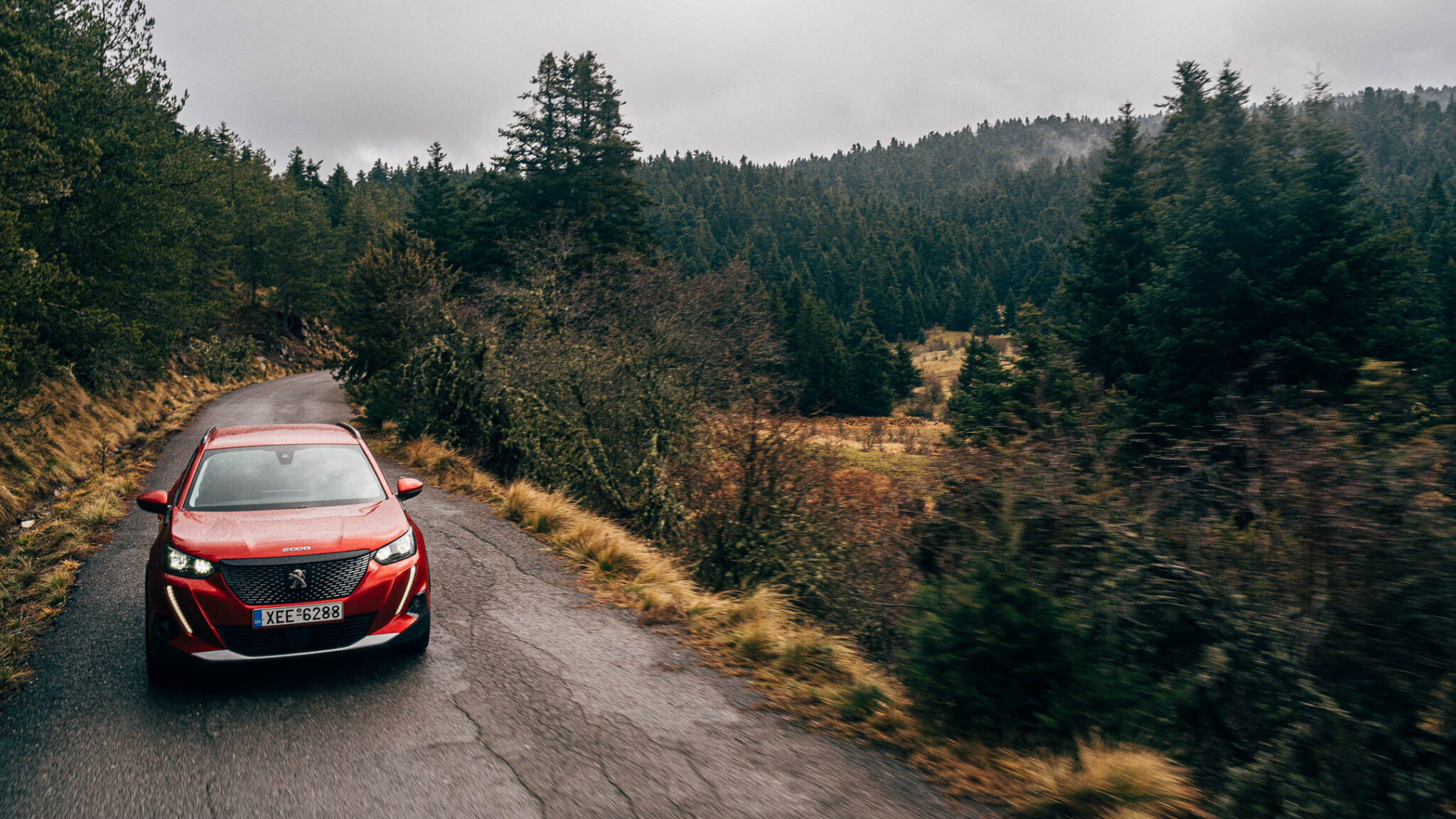
Leaving behind the monastery and heading towards Stemnitsa it is almost dark. At the same time, at one point along the route, we fall into a fog that makes the route even more difficult. Peugeot’s LED technology headlights combined with the LED fog lights with turning function prove to be ideal for driving in low visibility conditions, in addition to increasing visibility on bends.
Dimitsana
The next day finds us in Dimitsana, one of the most beautiful villages of Arcadia, with its traditional architecture, beautiful and atmospheric guest-houses, hospitable shops and of course the wonderful view of the gorge of the Lousios river. We walk for a long time in the village and admire the tower houses and mansions, spread over the two hills where the settlement extends. We walk along the cobbled streets, stopping at quaint little corners from time to time and reflecting on the decades that have passed and the stories these streets have known. We visit the Historical Library with its truly rare publications and the ecclesiastical museum located in the house of Patriarch Gregory V.
We have a break at the beautiful “Ta Pano Kato” and then are off for a tour of the Open-Air Museum of Water Power of PIOP, which is a stone’s throw from the entrance of the village. We take a guided tour of the site, which is an excellent example of the development of pre-engineered technology. We follow the flow of water, observing first the fulling and flour mills, then enter the tannery and finally the gunpowder mill. During the years of the Greek Revolution, Dimitsana played a pivotal role in the supply of gunpowder.
Zatouna
Zatouna, which in Slavic means “across the river” is our next stop. However, before we reach the settlement and while driving towards it, we have the opportunity to admire once again from an excellent angle Dimitsana, as well as the overall gorgeous view of the Lousios gorge. Arriving in Zatouna, located 4 km away from Dimitsana, we enjoy moments of absolute tranquillity, walking through the narrow alleys, admiring the courtyards, the cobbled streets and the century-old plane trees as we arrive in front of the museum dedicated to Mikis Theodorakis, who spent a year in exile here.
Stemnitsa
It is almost noon when we arrive in Stemnitsa, another emblematic village of mountainous Arcadia with a rich history and at the same time very popular with visitors. We make a first stop at the central square and at the traditional café Gerousia for coffee and mouth-watering galaktompoureko (Greek syrupy custard pie). Ismene and George sit at the next table, playing backgammon. They are here because Ismene is studying at the Stemnitsa School of Silversmithing. She tells us about the school and her experience there and we decide to visit. It is housed in a beautiful two-storey traditional building and features all the necessary infrastructure for theoretical and practical courses.
Besides, Stemnitsa, whose inhabitants have become famous for making bells for some of the most famous churches in the Danube countries, has a long tradition in metallurgy. There, at the school, we meet Elena who has come here all the way from Kavala to study and is in her second semester. “I was working more with liquid glass and felt I wanted to learn more about metals and stones”, she tells us while working on a piece of metal.
Elliniko
It’s almost dark and raining. We want to take a walk to Elliniko, as there is one of the most famous taverns in the area, “Georgantas”. We get into the Peugeot 2008 and the 3D beautifully lit i-Cockpit immediately draws the attention. The animated and dynamic screens greatly improve driving and safety. We arrive in Elliniko, we take a short walk in this beautiful village with its cobbled streets and beautiful buildings. We renew our appointment for the next day to see the special sights of the village in daylight, such as the two-storey stone building in the square, the old school, a landmark for the region.
The next morning I notice that the almond trees here have already bloomed, evoking a sense of renewal and joy. Morning coffee is served in the coffee shop where we meet Mr. Vangelis Smailis, who has many stories to share. Mr. Vangelis has travelled and worked in various cities in Europe, including Edinburgh, where he went to see his son who was studying there, and stayed to work in construction and as a logger.
Ancient Gortyn and Lousios river
We don’t want to miss the beautiful daylight and so we head towards Ancient Gortyn, the ancient city of Arcadia located on the banks of Lousios. The road is quite twisty, but the diesel engine keeps the torque at a high level, creating a feeling of safety and confidence. We leave the car and walk along the rushing river, admiring the bridge of Kokkoris. We cross to the other side to find ourselves in ancient Gortyn, where the foundations of the temple of Asclepius, the thermal baths, the chapel of Agios Andreas and the archaeological site of Elliniko are located. It is a beautiful location that, if you have time, is worth exploring. From here a path starts that crosses the valley and leads to the Monastery of Prodromos.
Monasteries and Paths
We are heading towards the Monastery of Prodromos. We stop at the observatory of Lousios and from here we have the opportunity to admire the river from above, as well as the monasteries perched on the slopes of the gorge. Through a very short path, about 800 meters long, we reach the Monastery of Prodromos, which was built in the 16th century and played an important role during the Greek Revolution both in terms of supply and medical care. A few metres before the entrance to the monastery, a new path begins, just under 2 kilometres long, leading to the Monastery of Filosofos, on the opposite side of the gorge. The old Monastery of Filosofos was the first to be built in the area, around 963 AD, by Ioannis Lampardopoulos, who was the secretary of Emperor Nikiforos Fokas and was known as a “philosopher”. Today it is a unique example of Byzantine architecture of the 10th century. A few centuries later, in the 17th century, a new monastery was built without abandoning the old one.
In the fir forest towards Limpovisi
We drive our Peugeot 2008 through spruce forests, heading towards the village of Limpovisi. Mother nature is enchanting; amazing images appear in front of us which are indelibly engraved in our memory. Tall trees often shade the road and the sky disappears from view. As we climb, some snow appears, all that’ s left here from the recent storm. We arrive at Limpovisi, an abandoned village located at 1200 meters altitude.
We arrive at Libovisi, an abandoned village located at 1200 meters altitude. Theodoros Kolokotronis hailed from here. We visit his house, as well as the museum of the Kolokotronis family which is located in a restored building right next door. The village also has a café, which in winter is usually open from Friday to Sunday, while in summer it is open most days of the week.
Reugeot, our valuable companion
We get into the Peugeot 2008 and continue our journey in the heart of the Peloponnese. A valuable companion on this mission, a car that drives easily on difficult roads and offers us a lasting feeling of safety and security. Road sign recognition, automatic activation of the large headlights, lane-keeping assistance, stop & go function are just some of the features that rank Peugeot 2008 highly among similar options.
Read also:
Horseback riding in the mountainous heart of the Peloponnese
A beekeeper in Arcadia reveals the secrets of the complex bee communities
6 quality food and drink spots in Peloponnese mountain villages Vytina, Dimitsana



